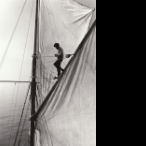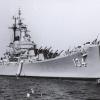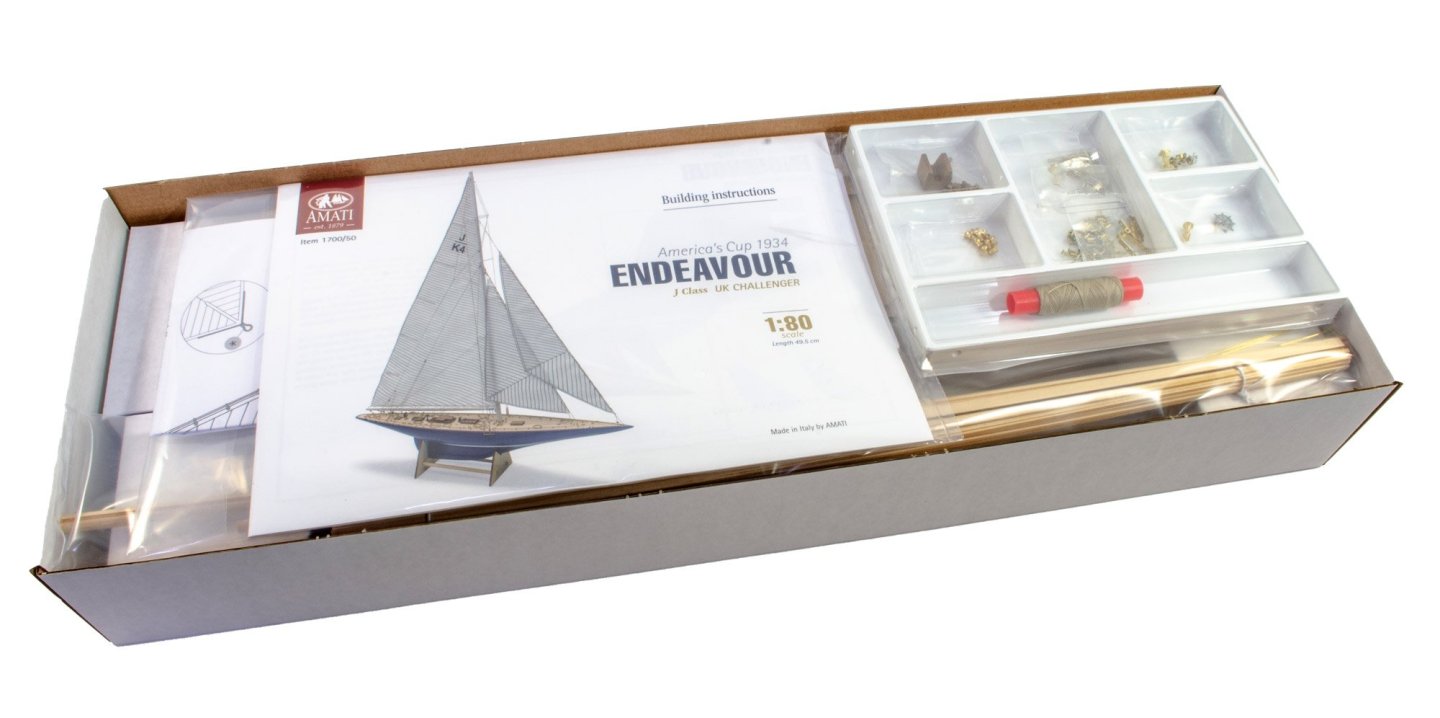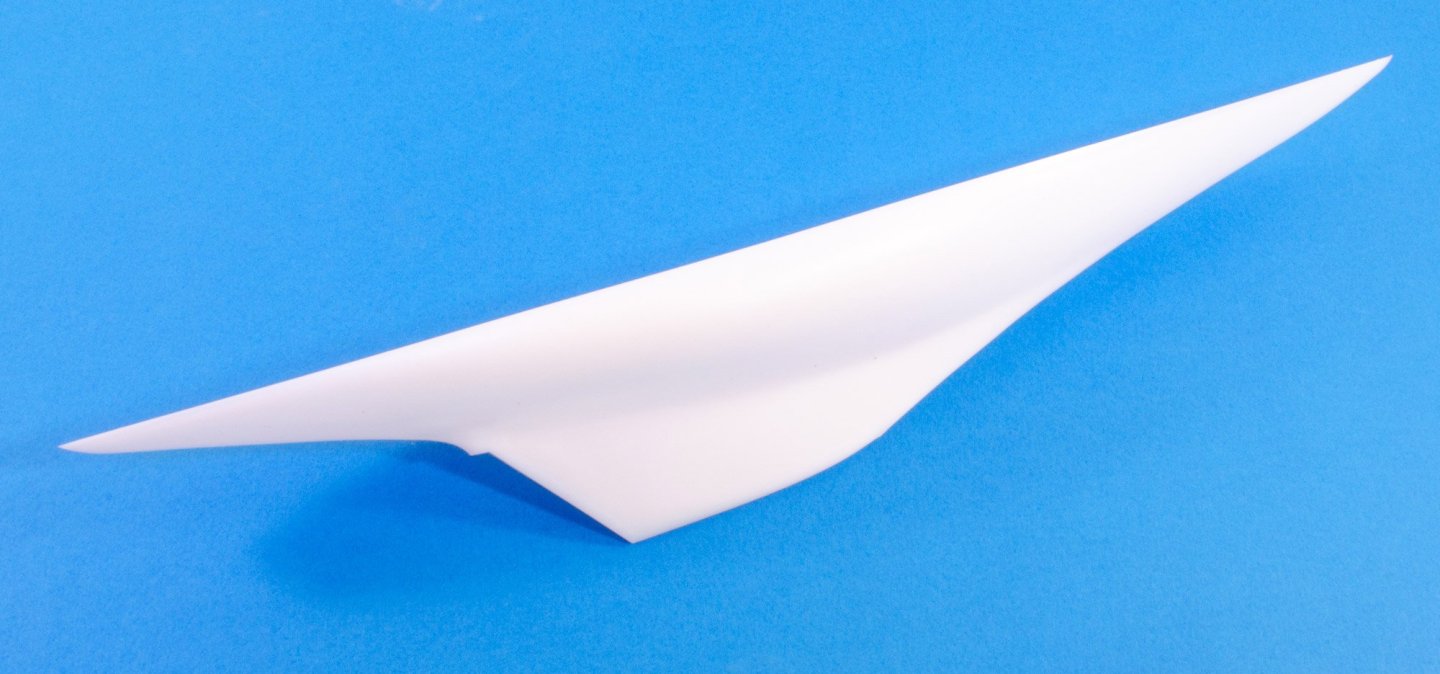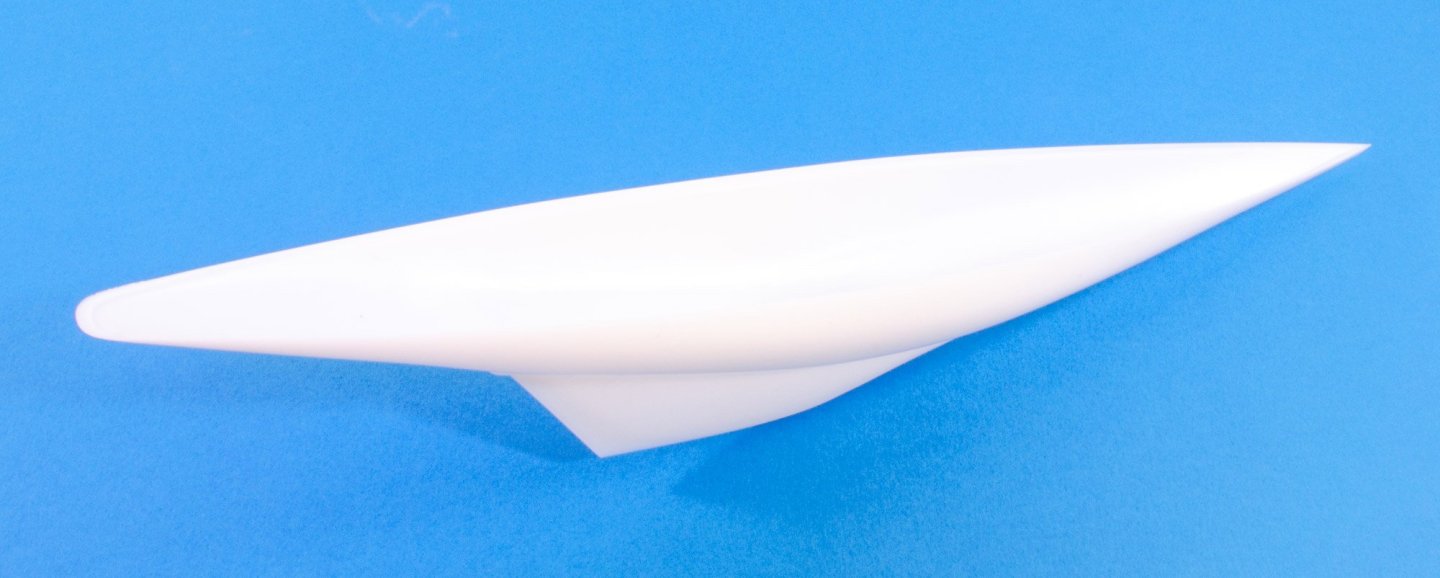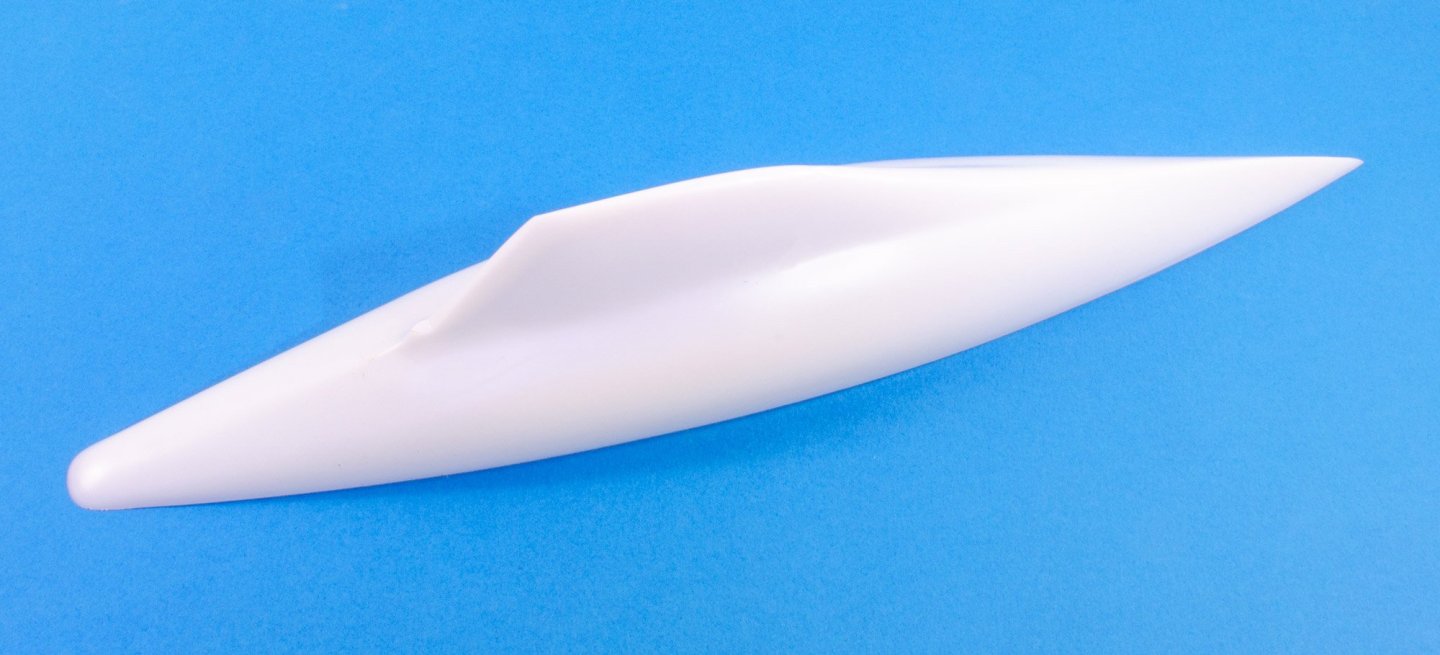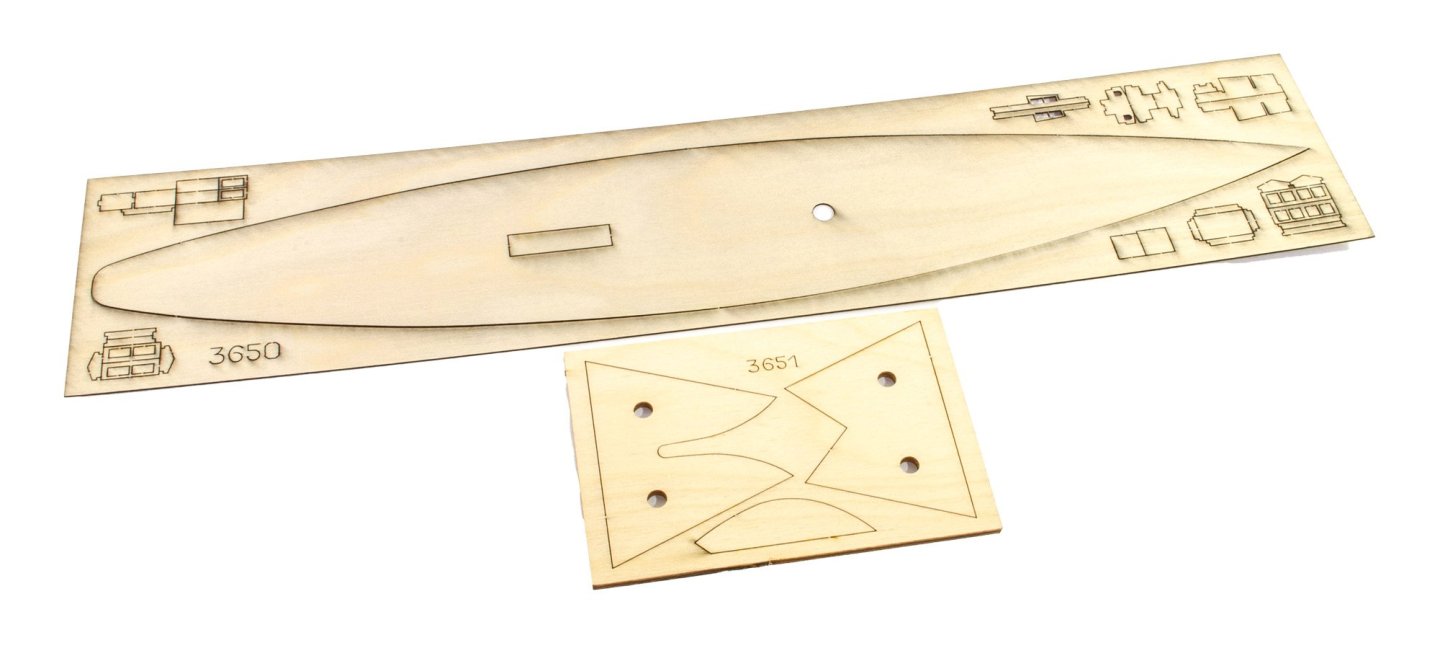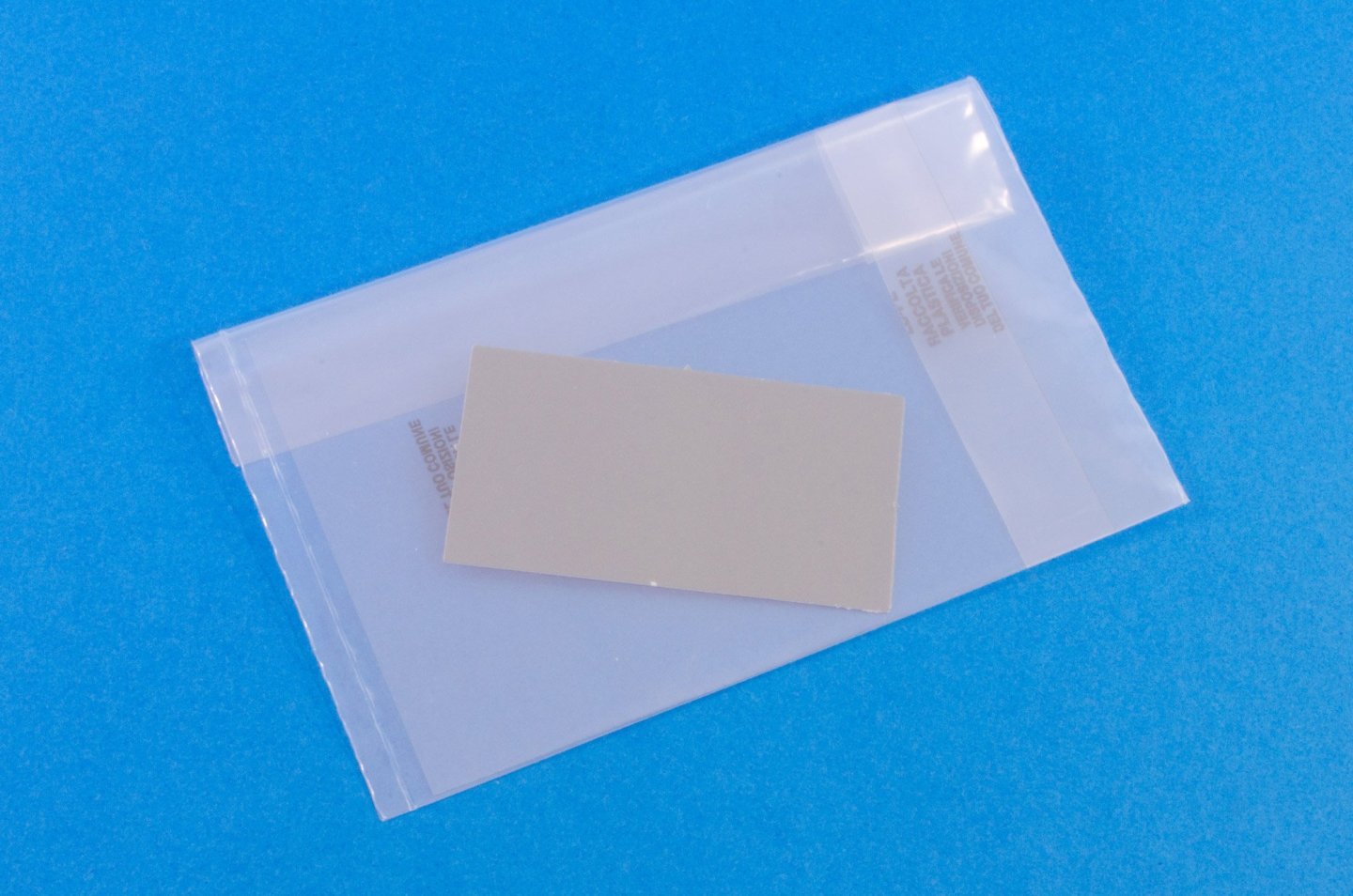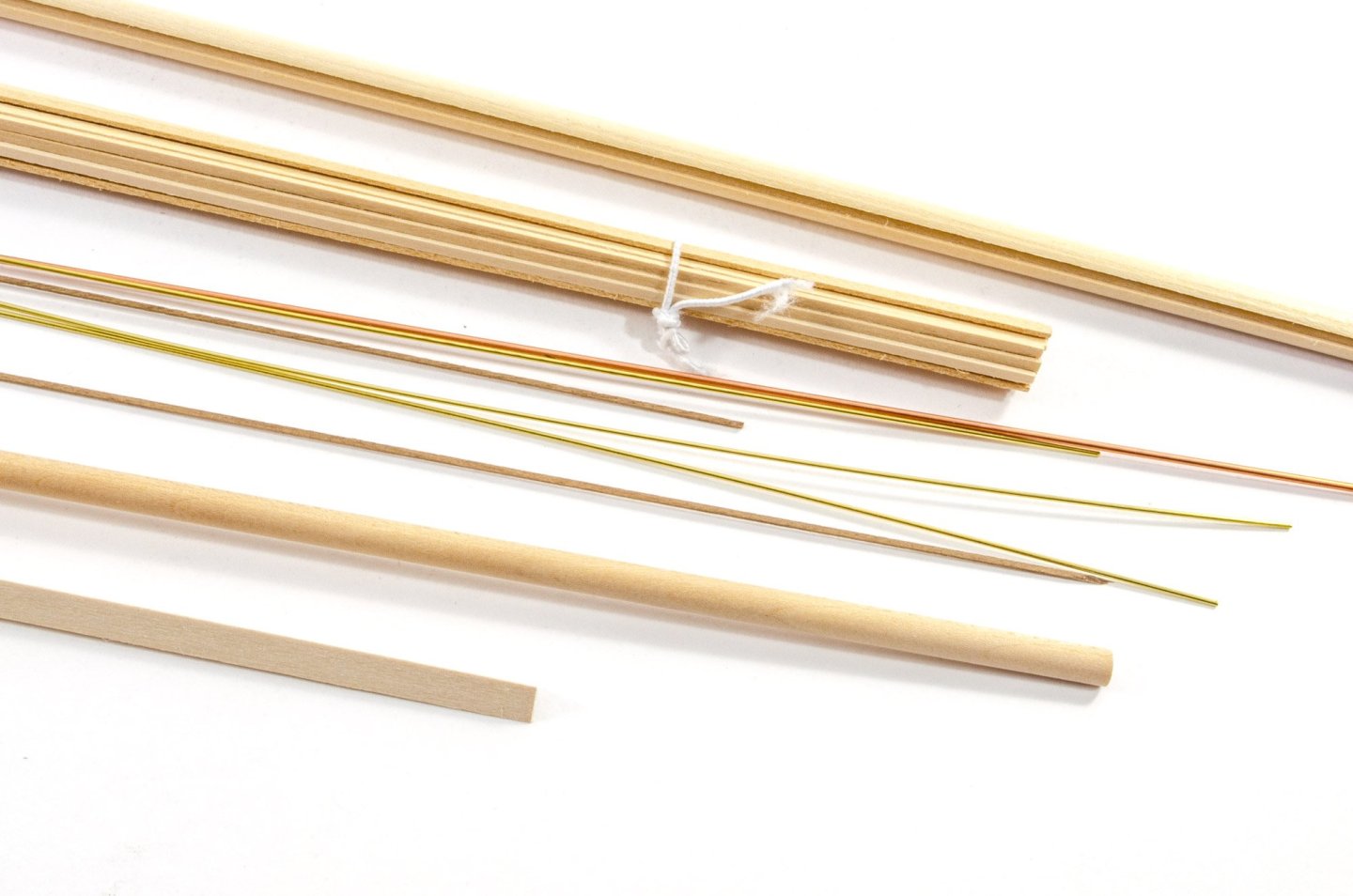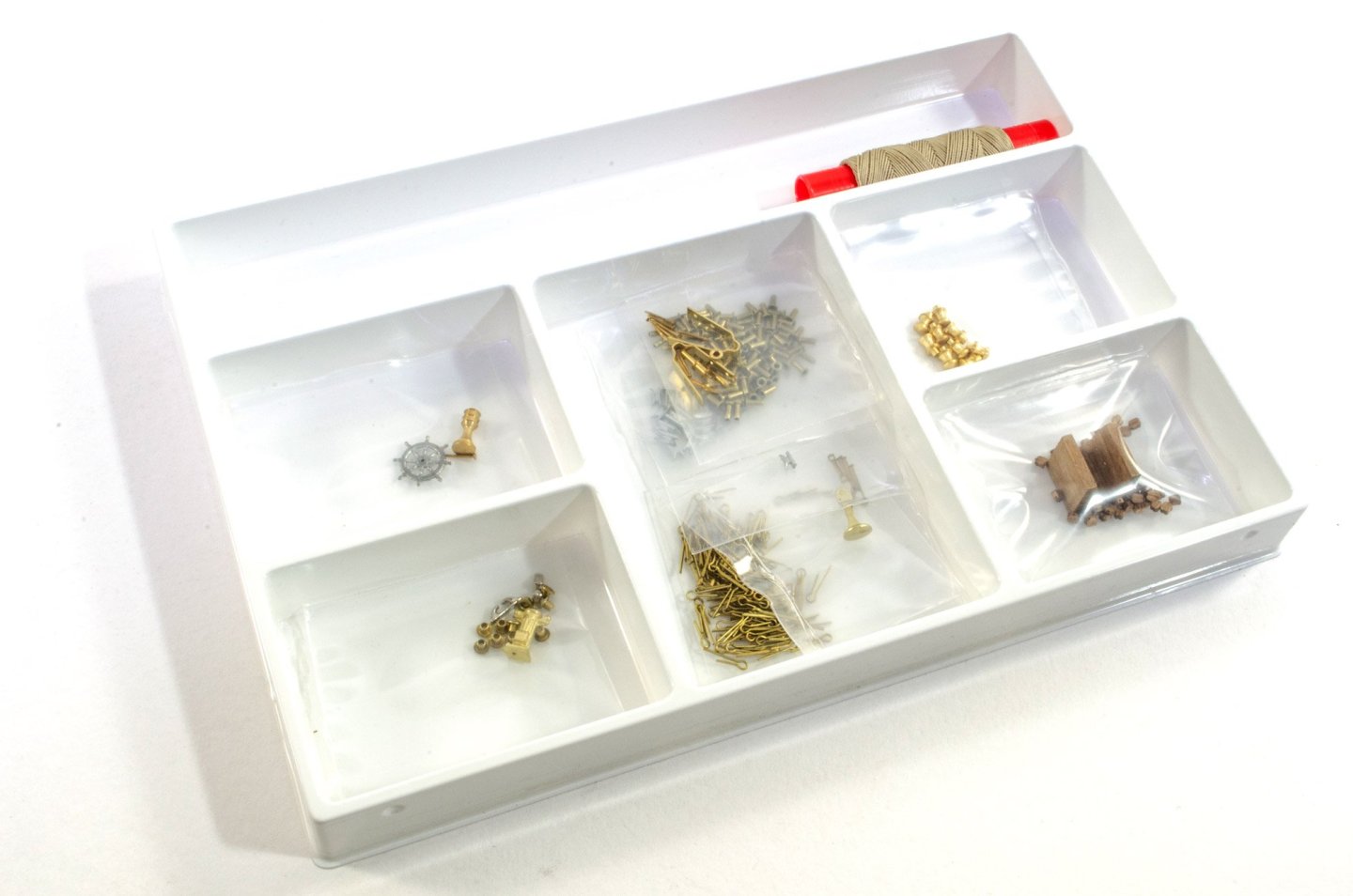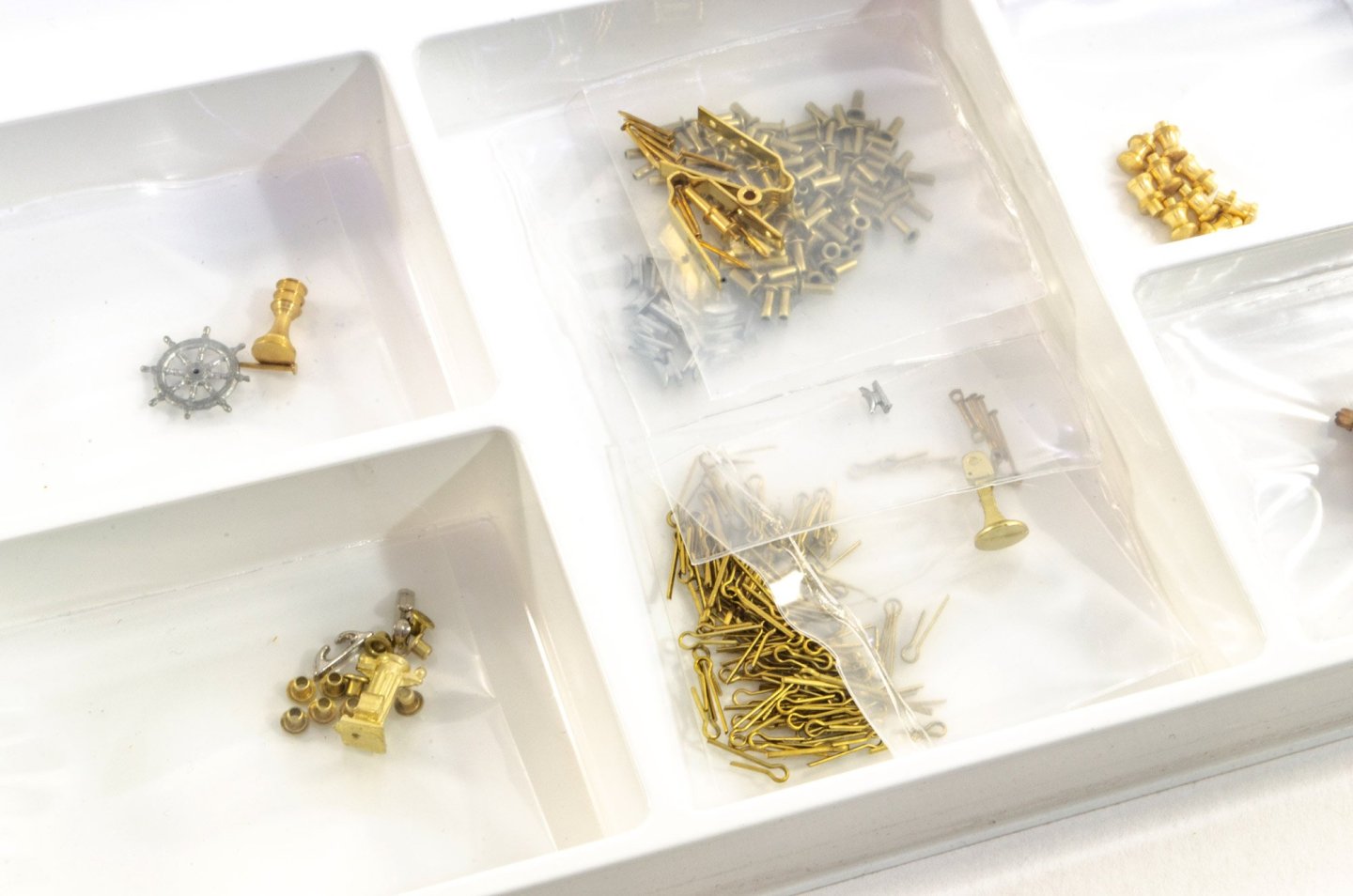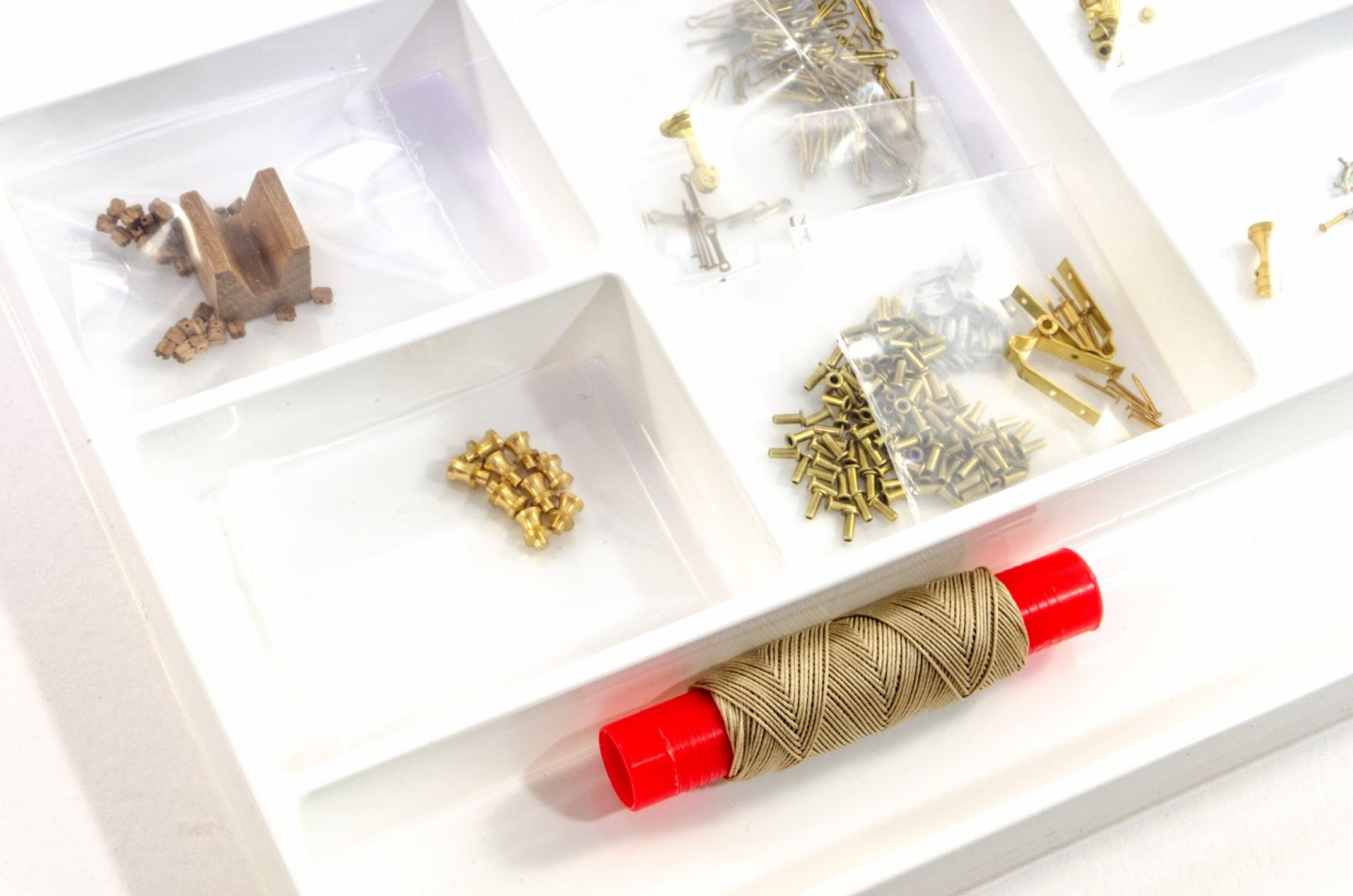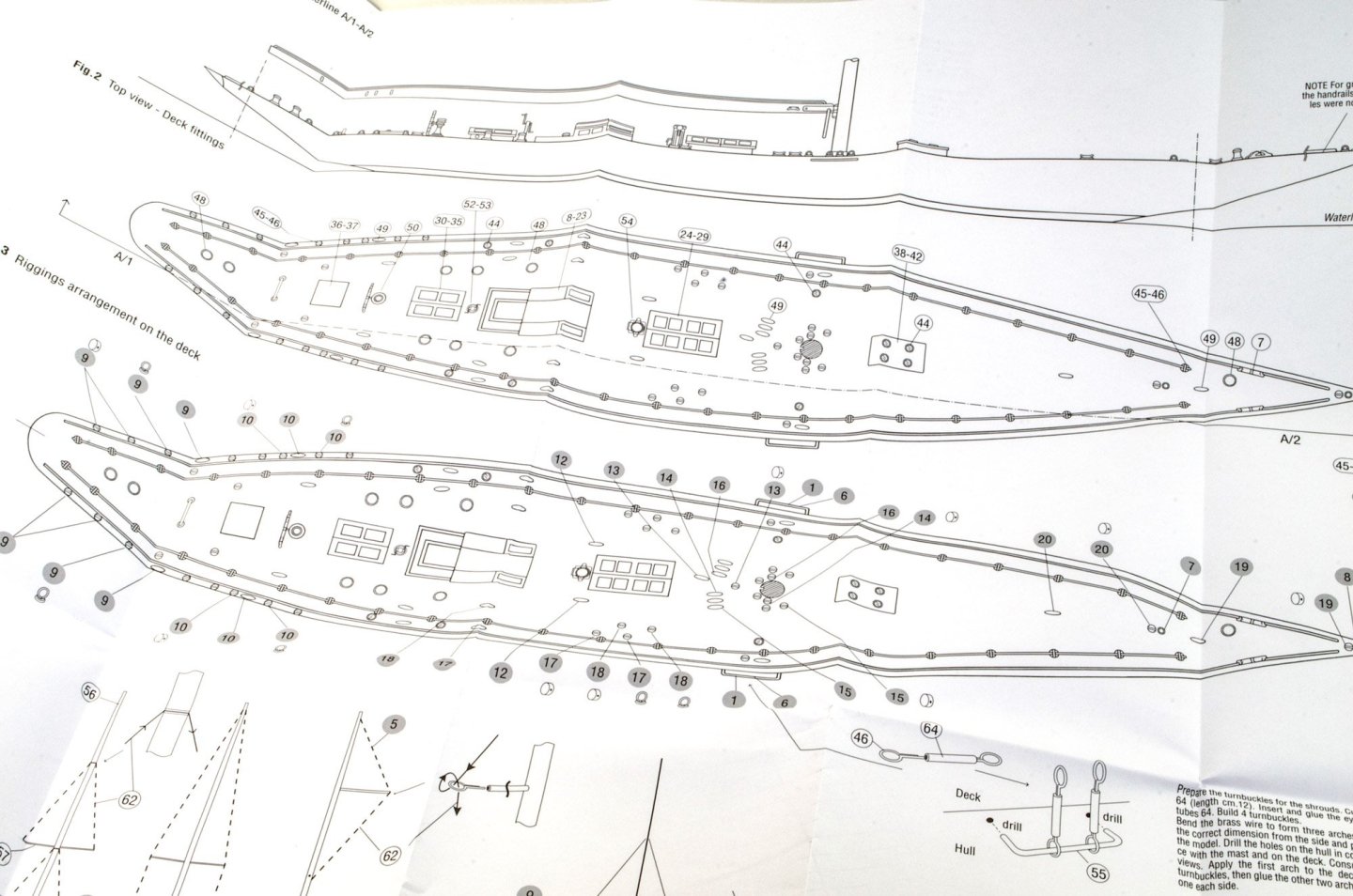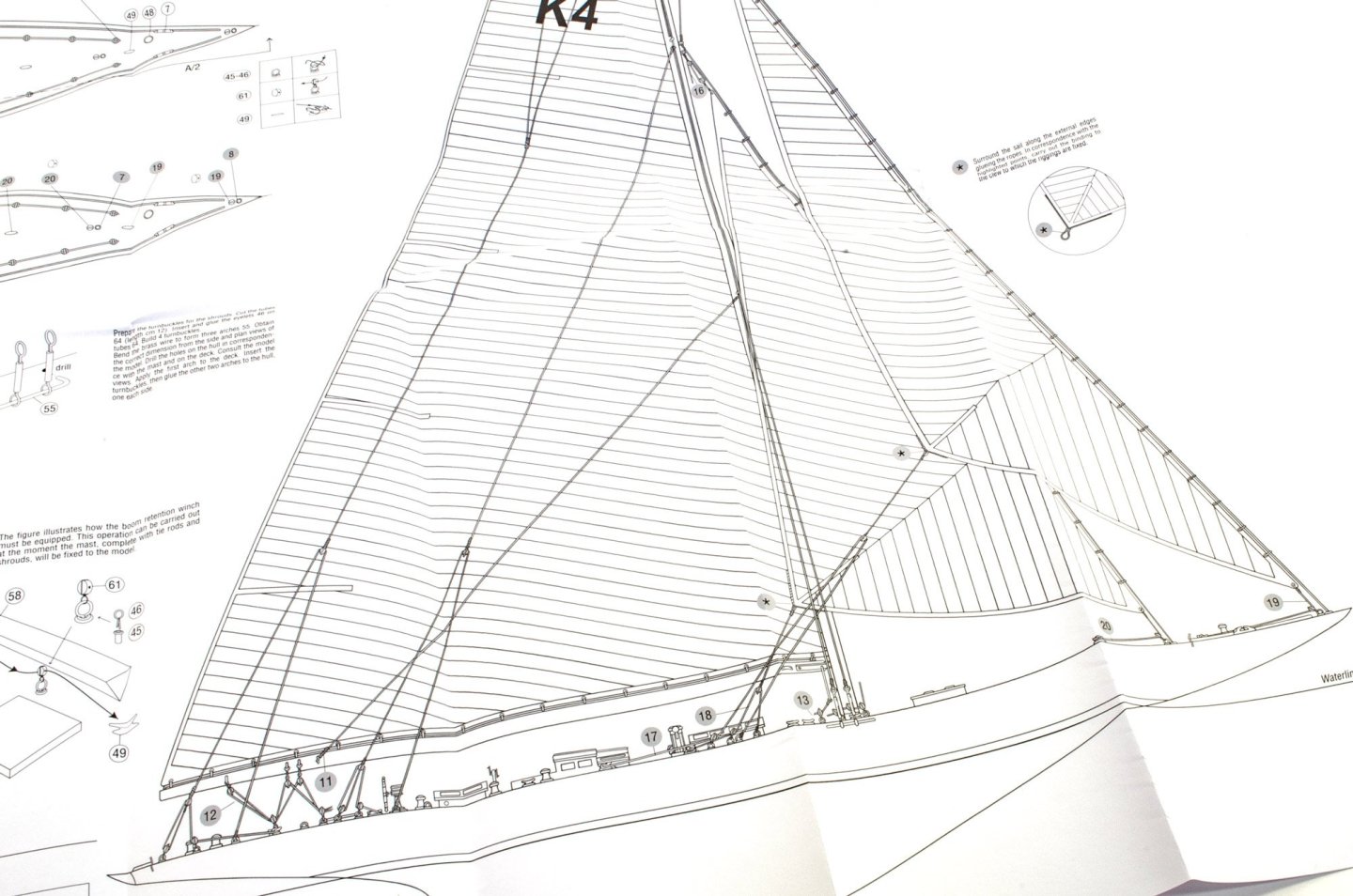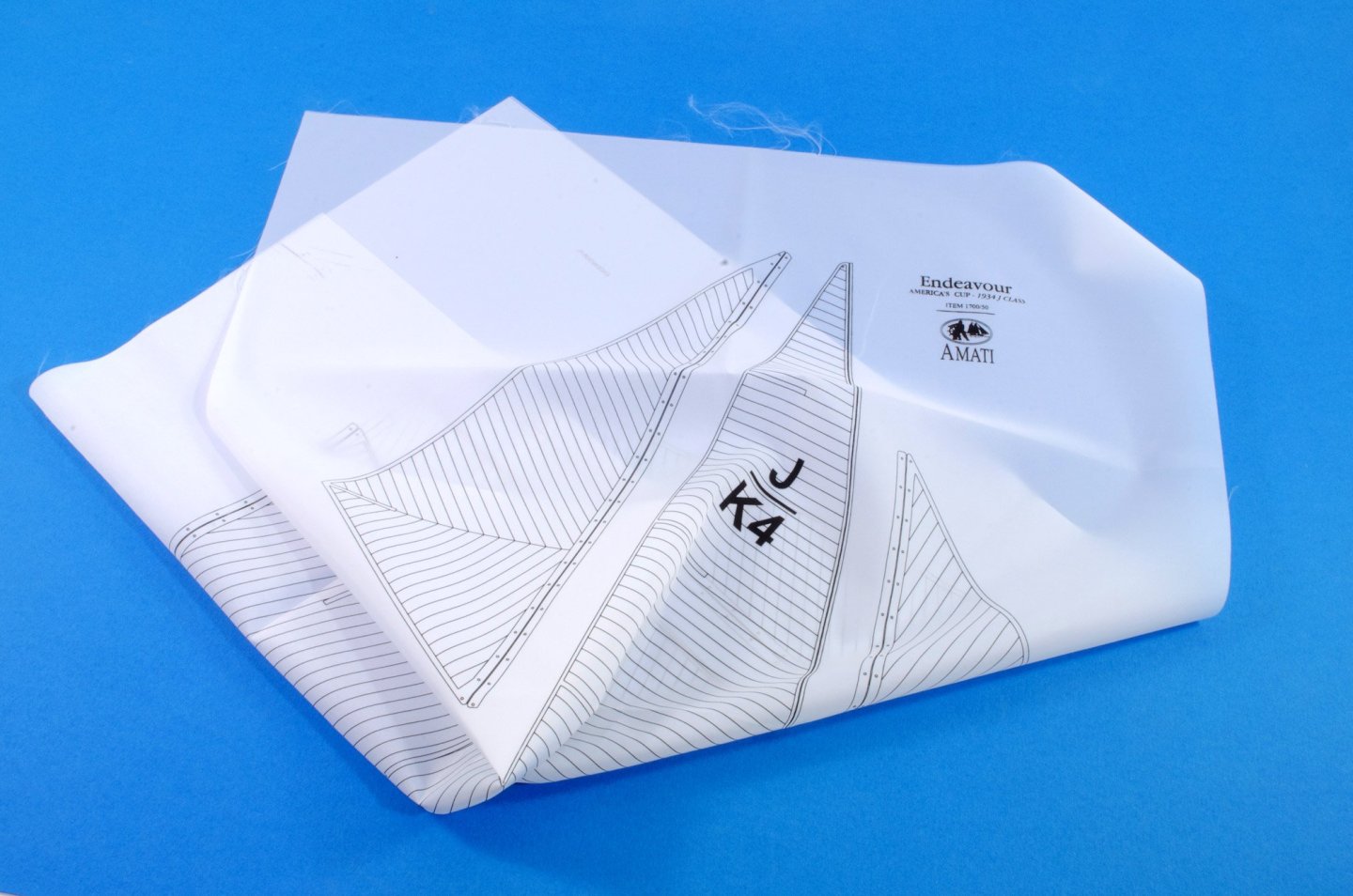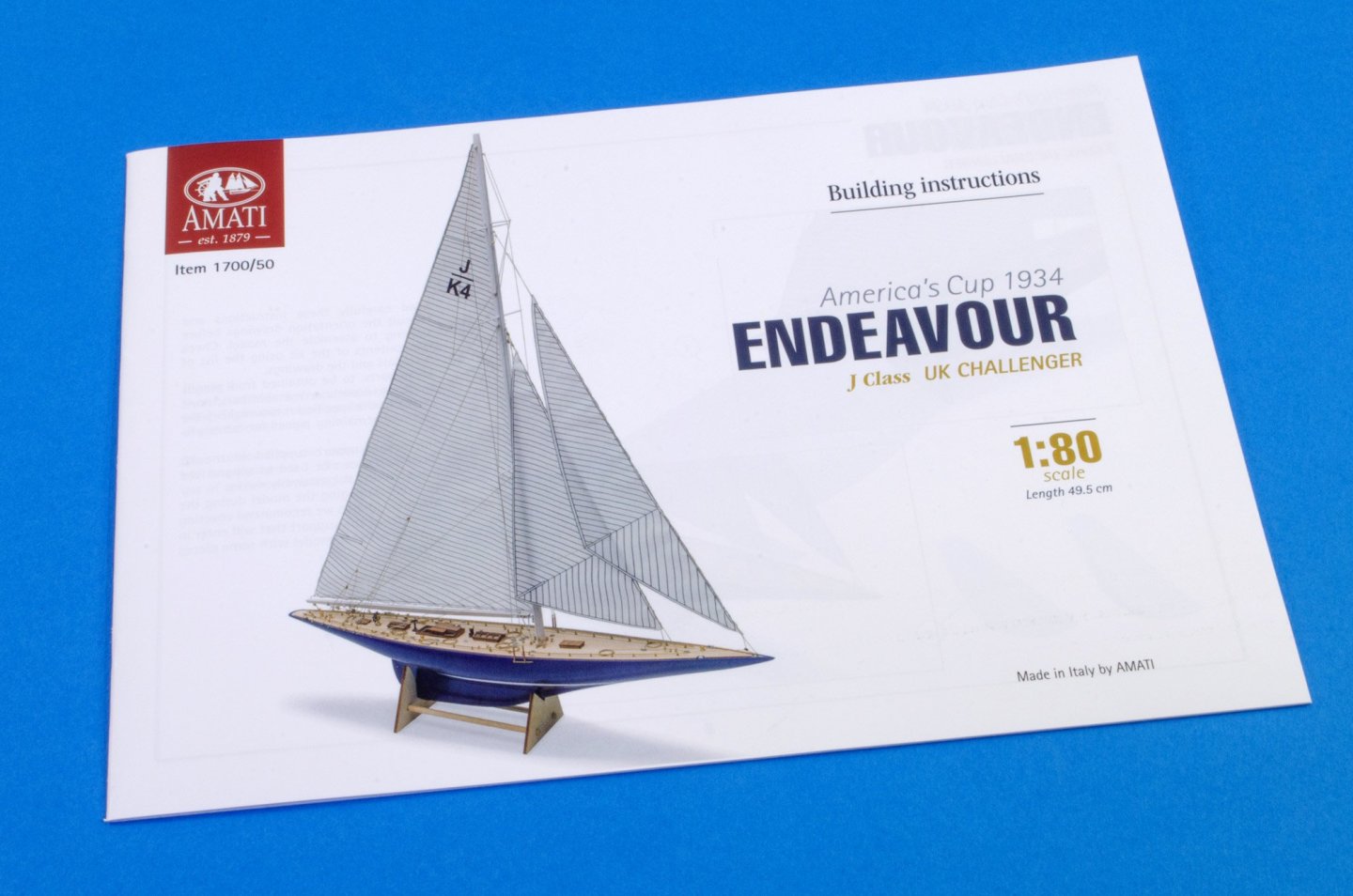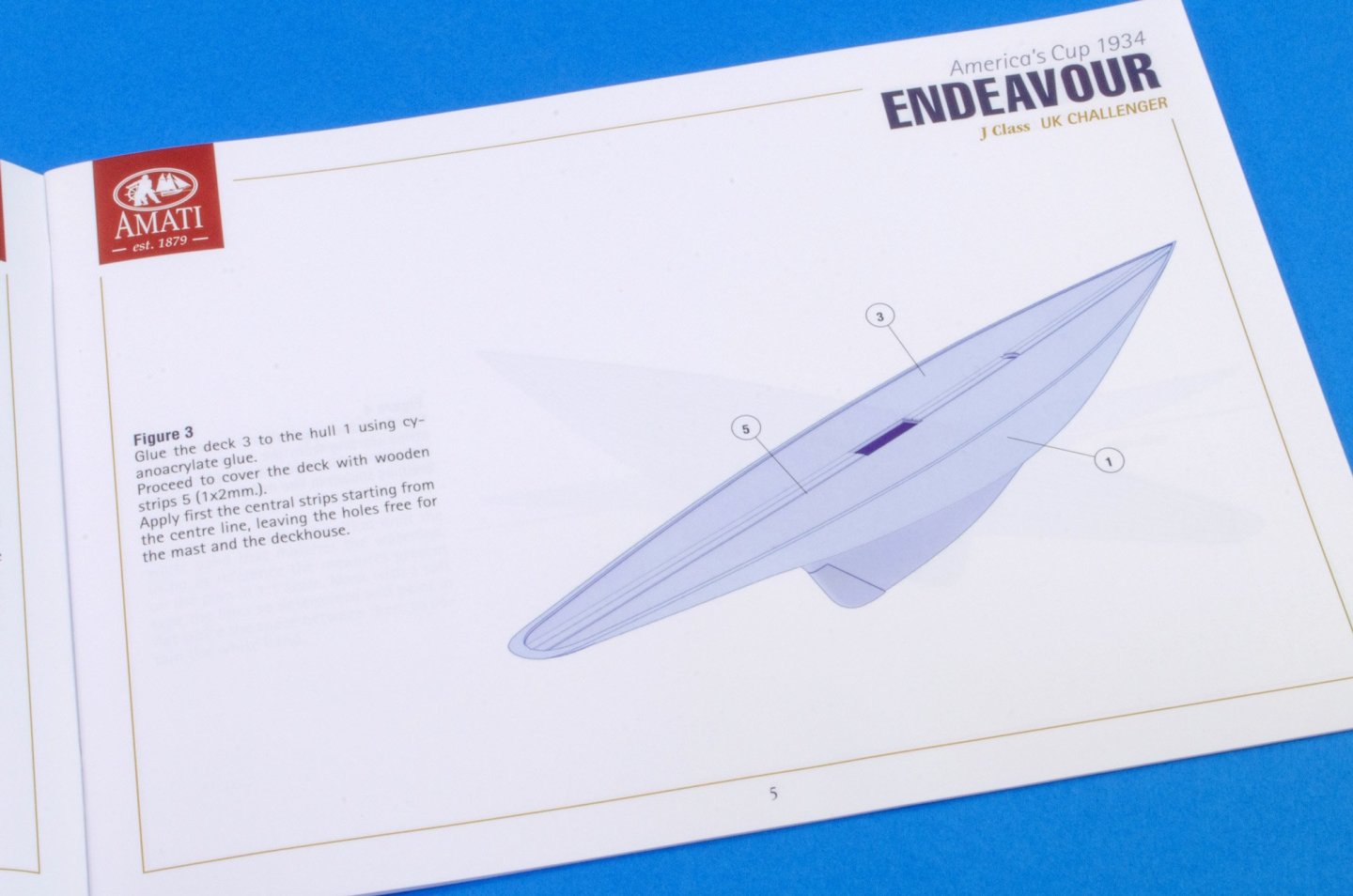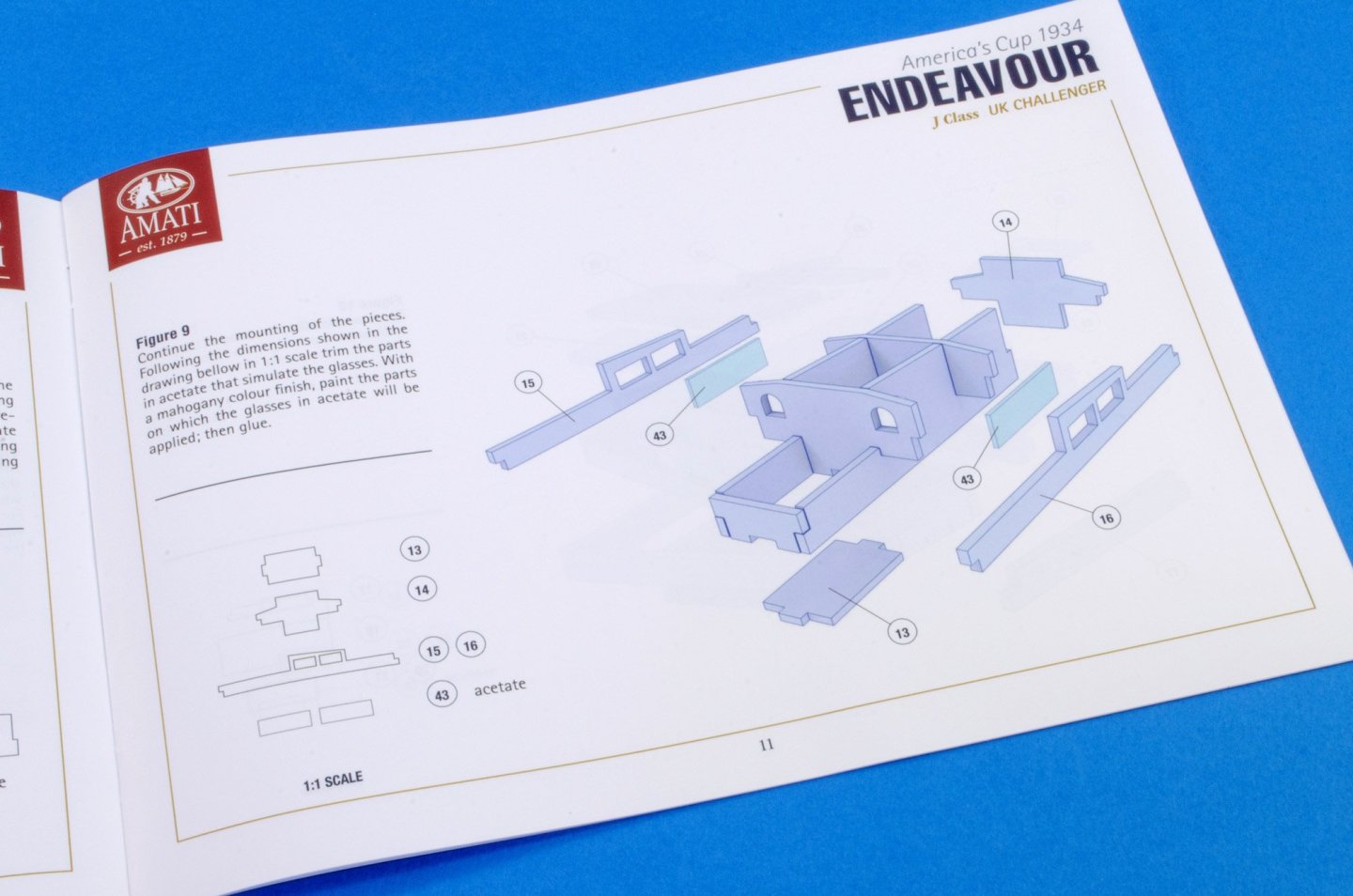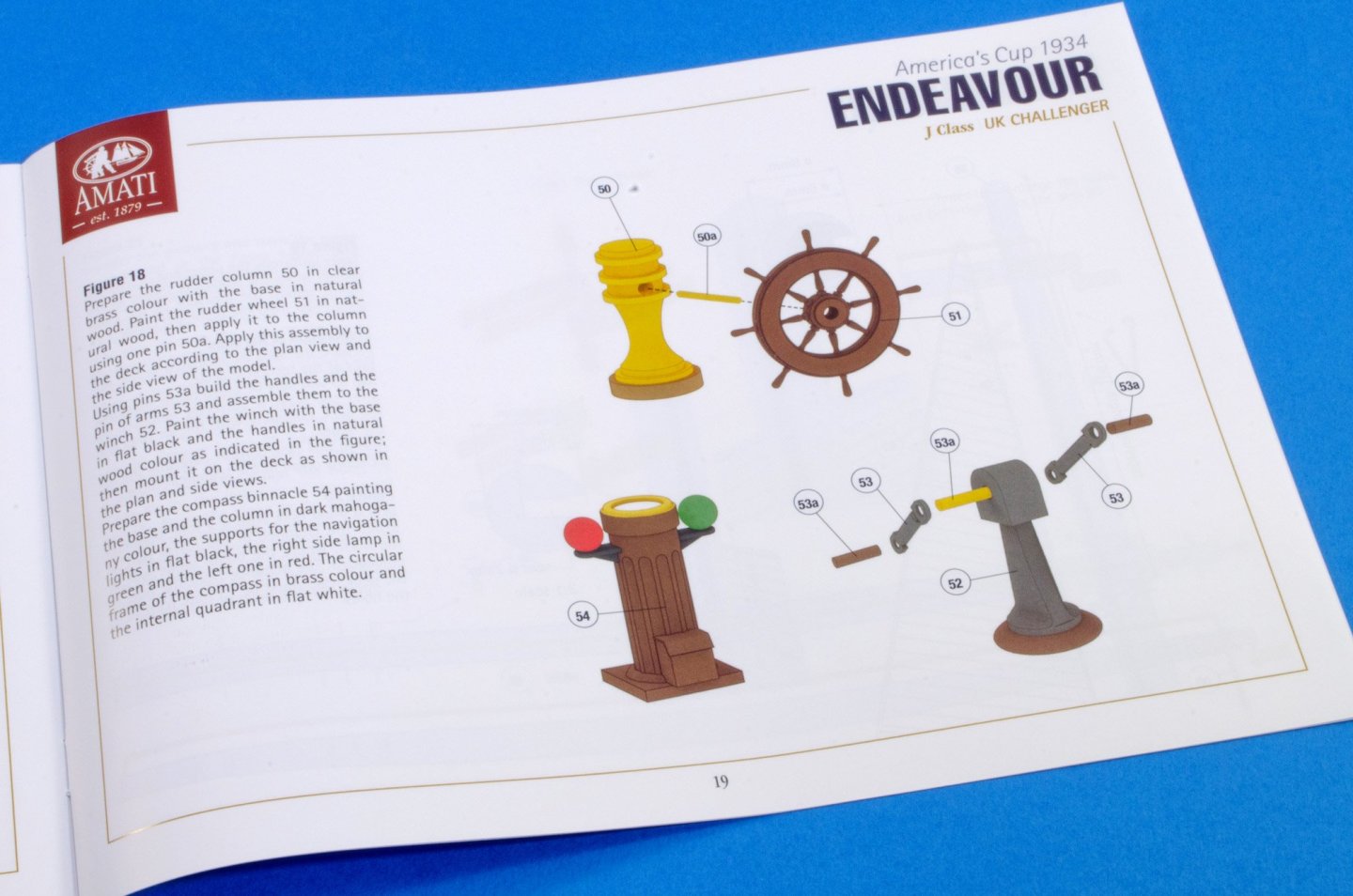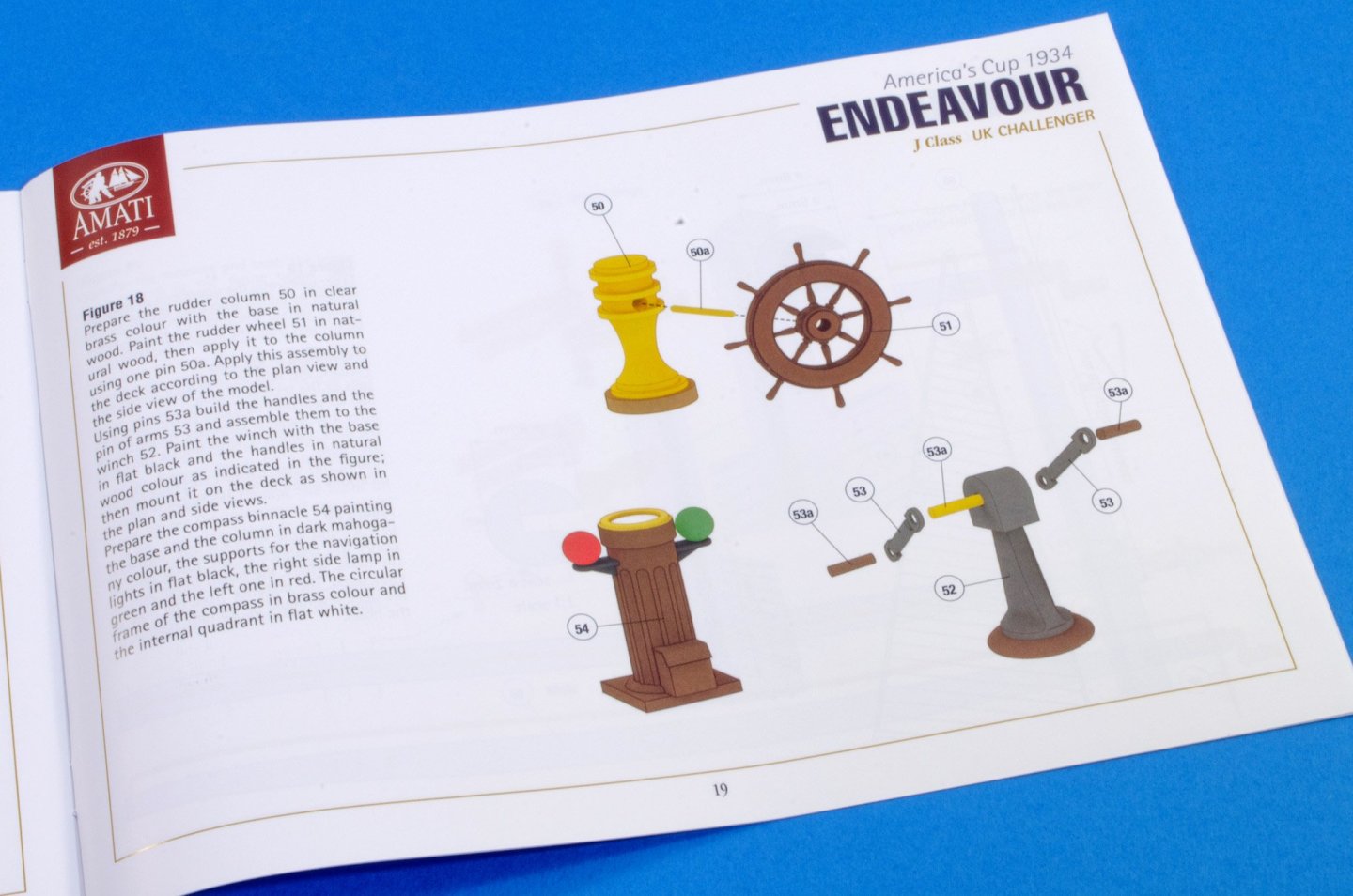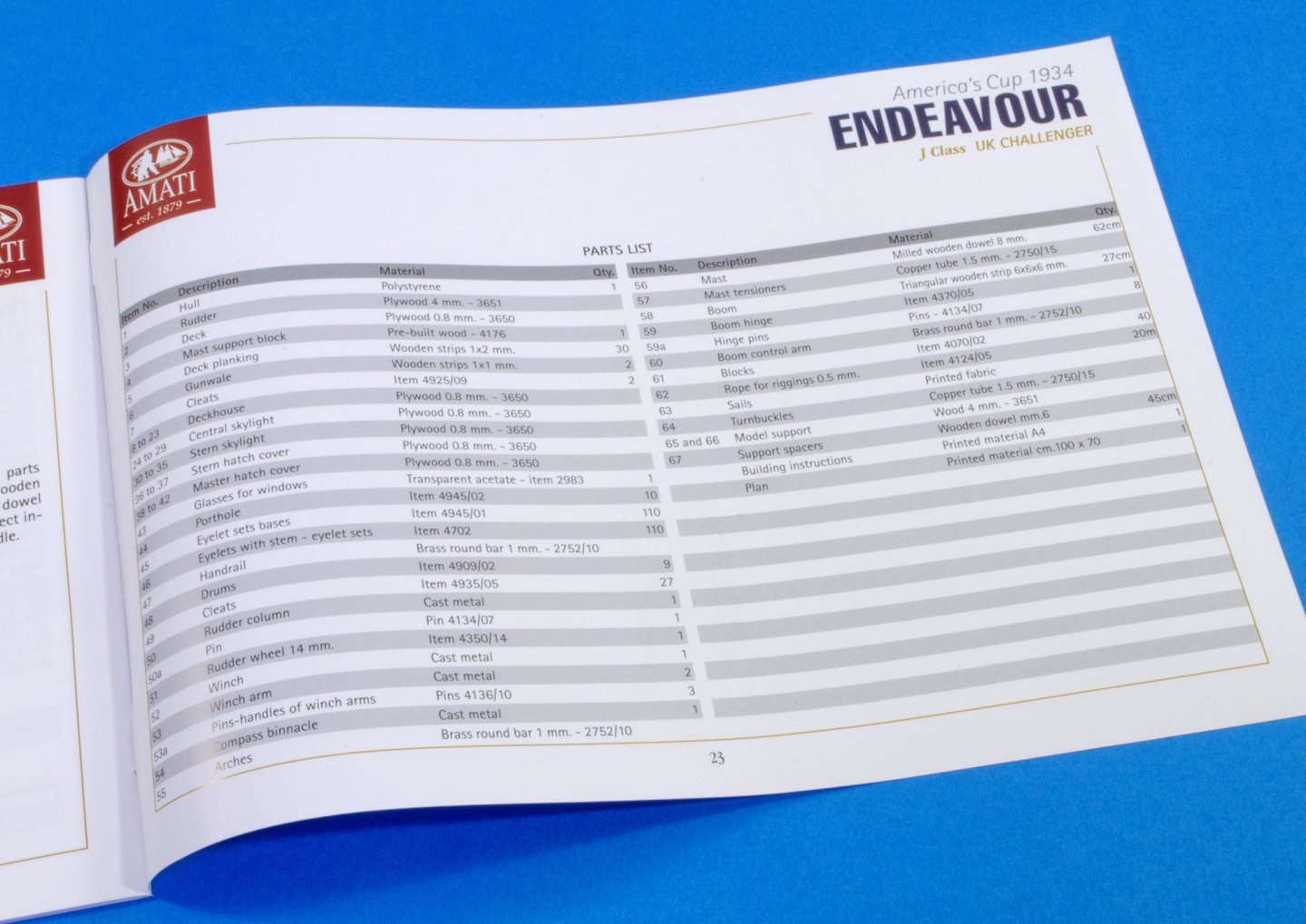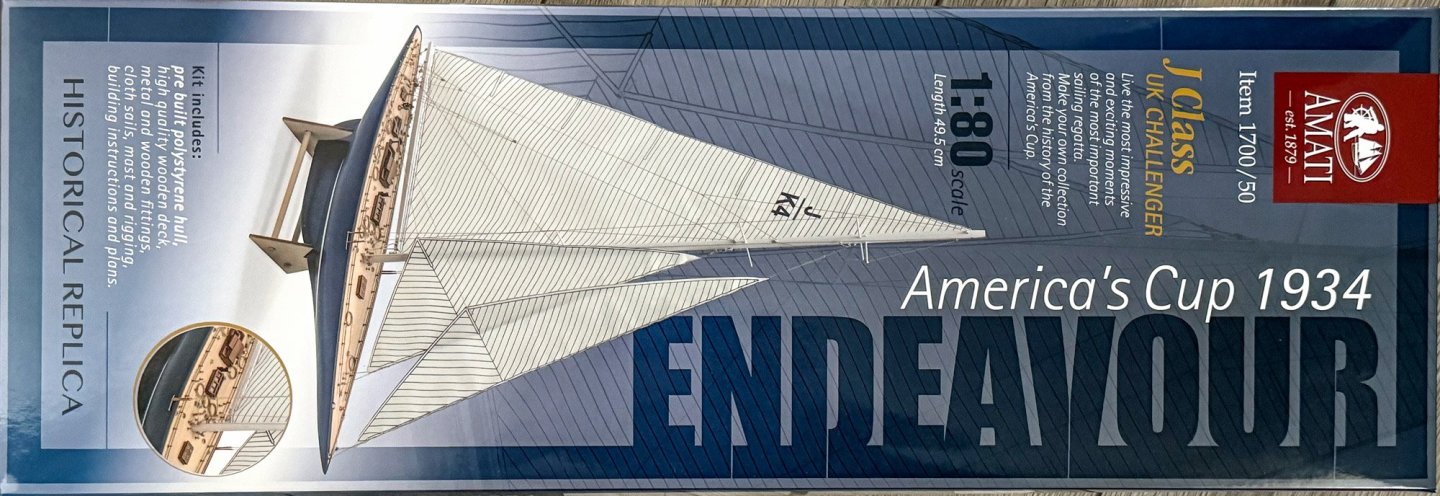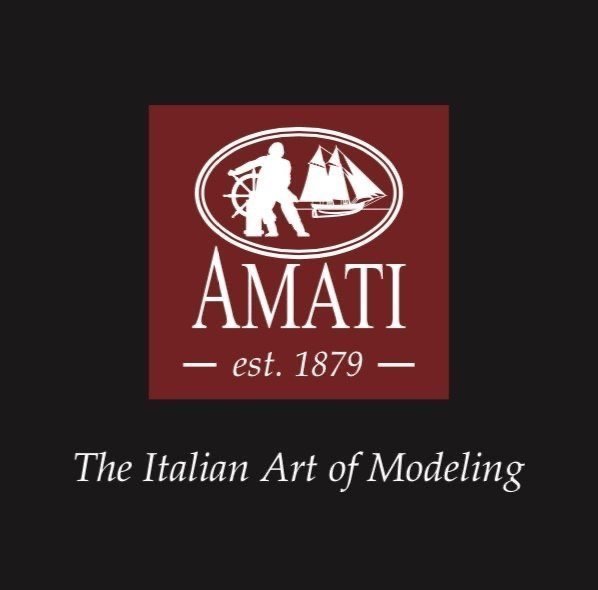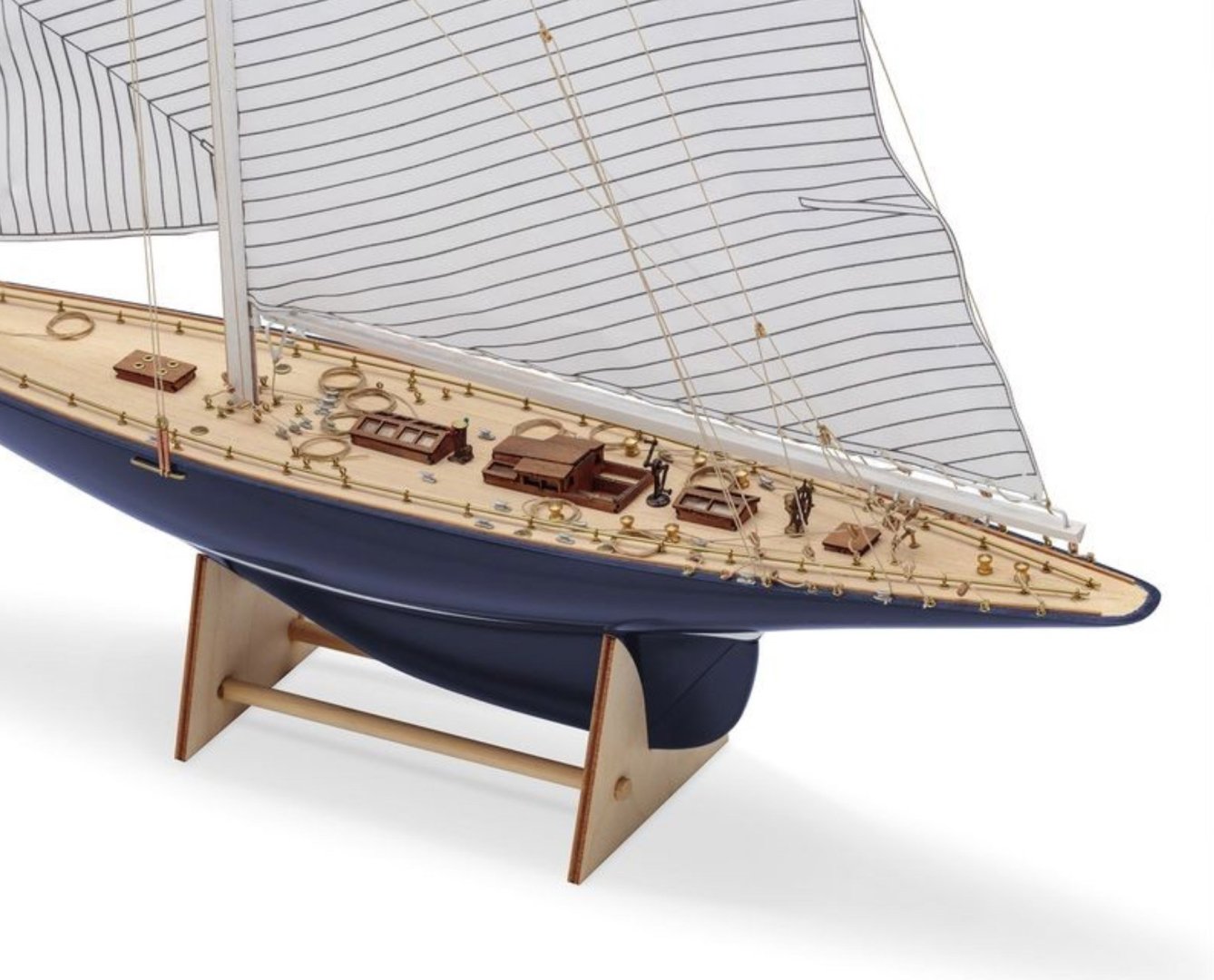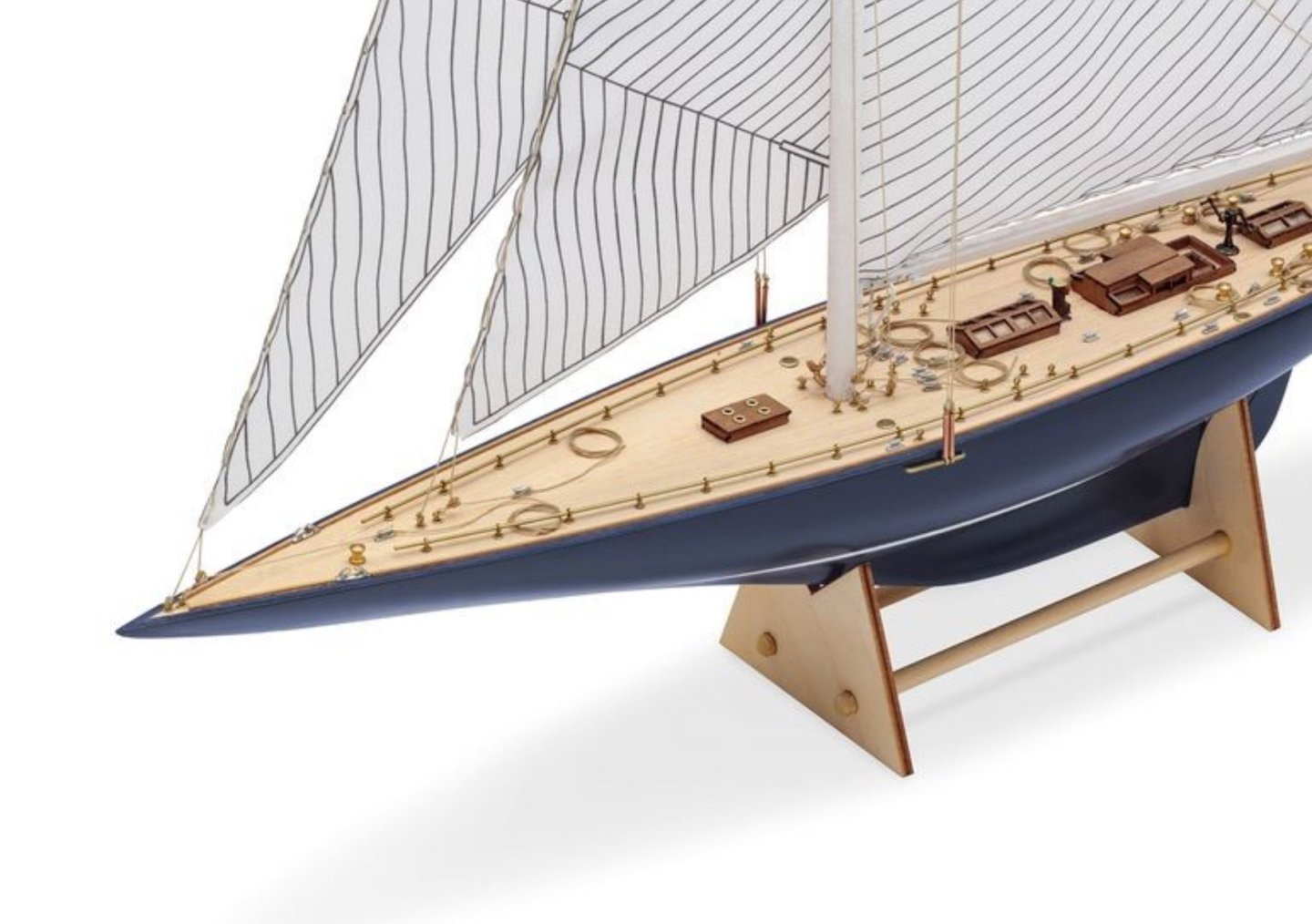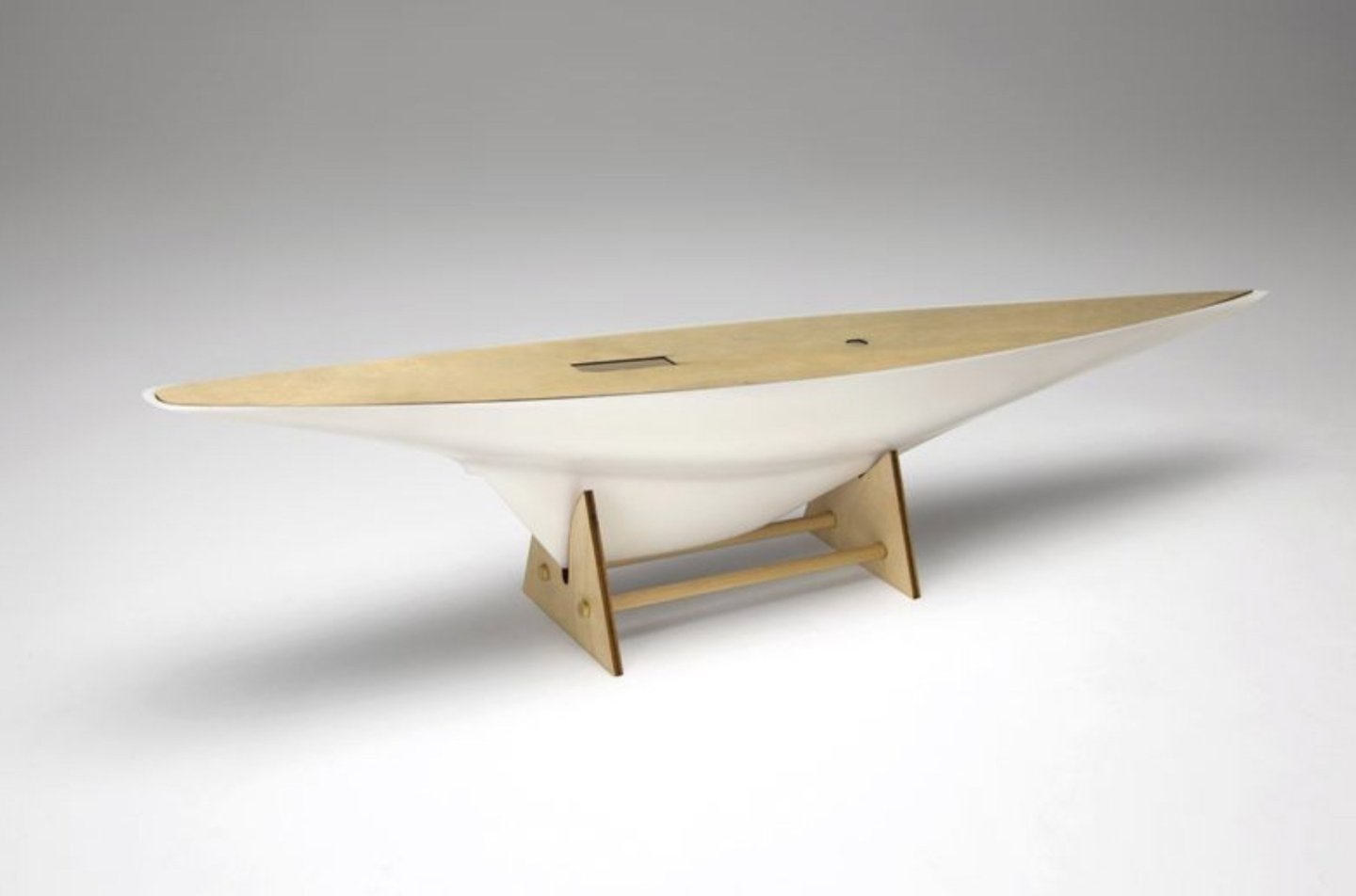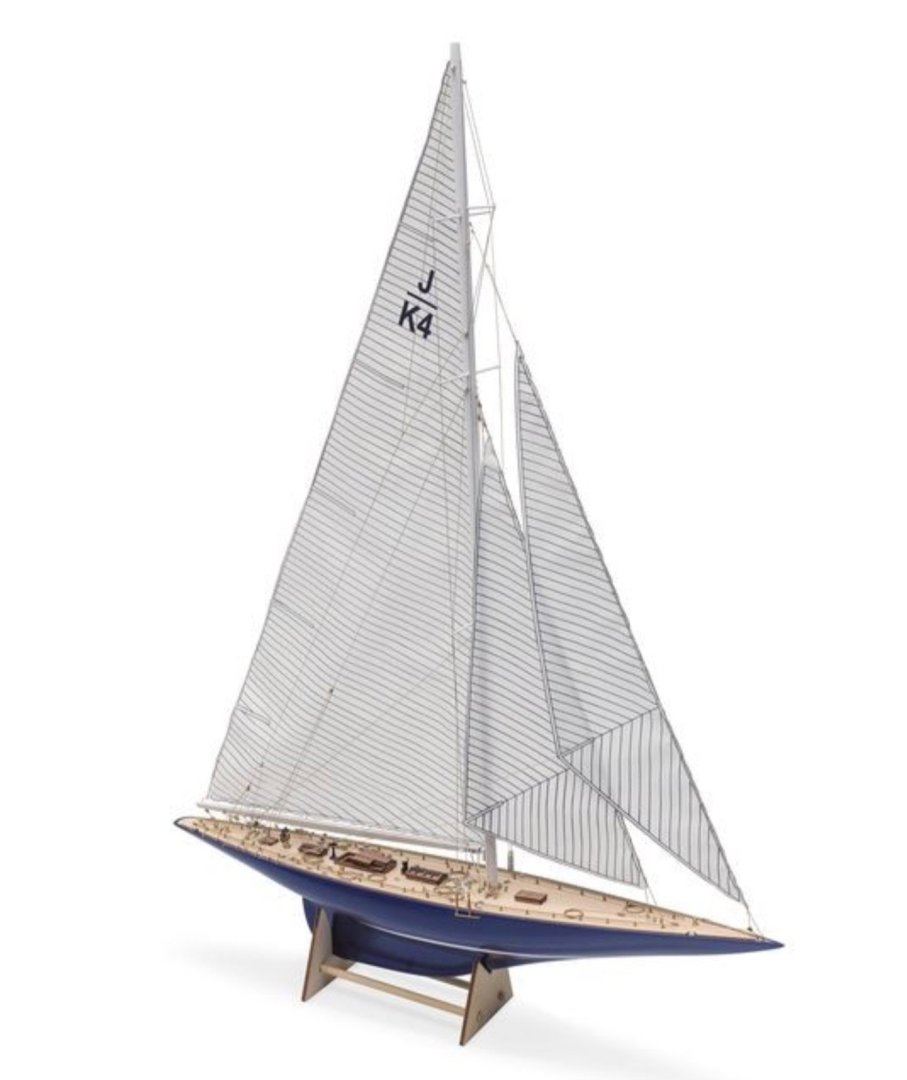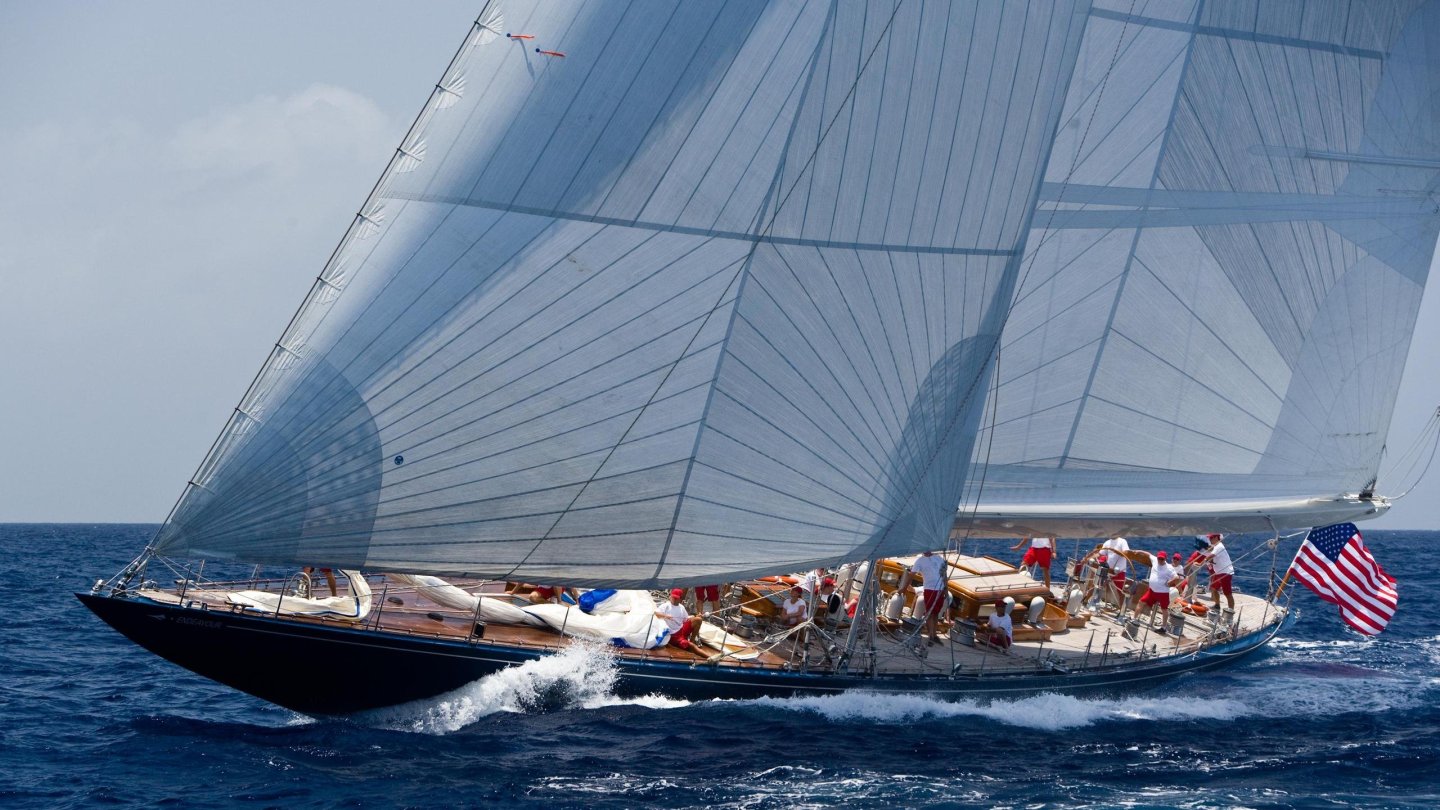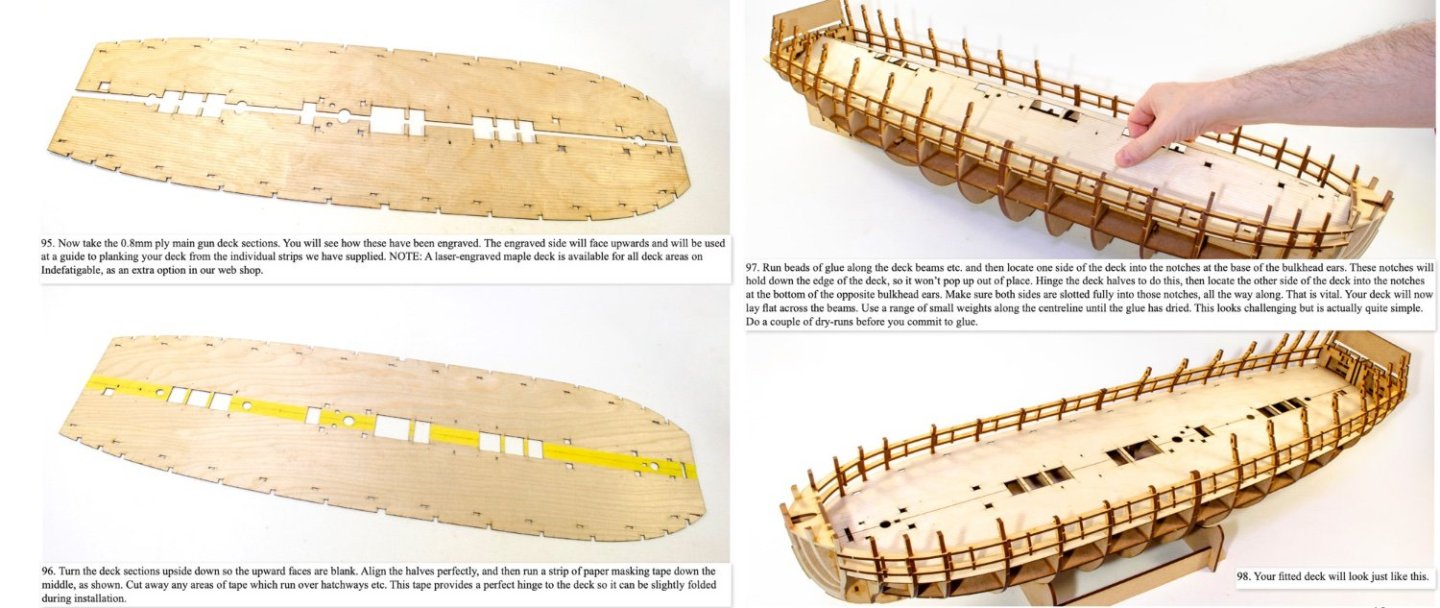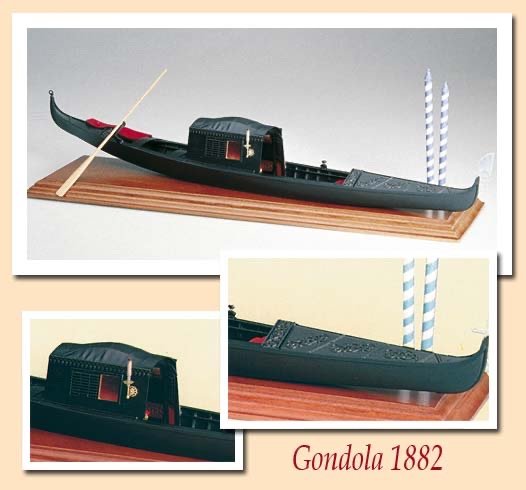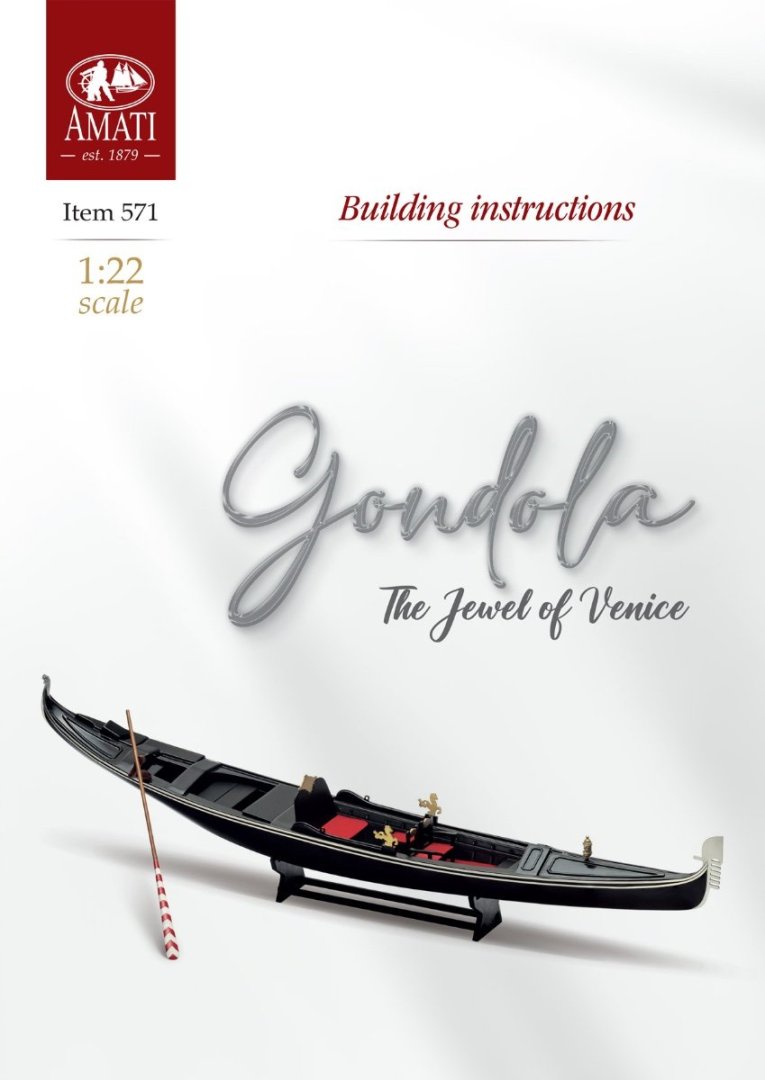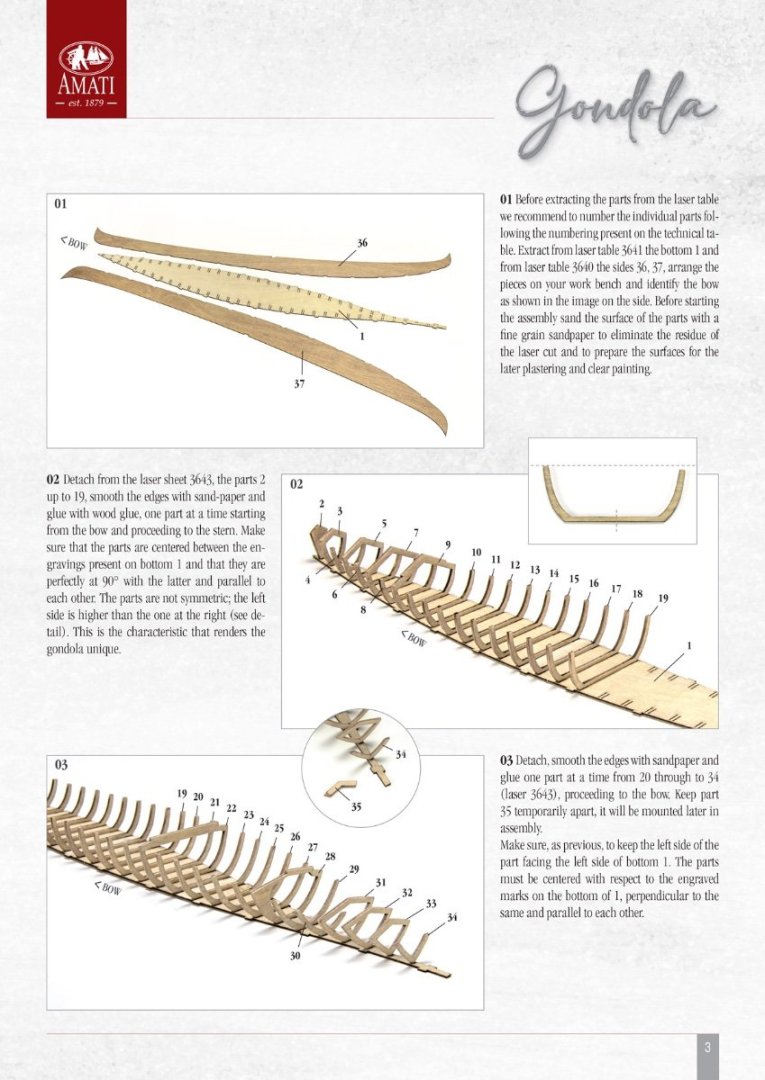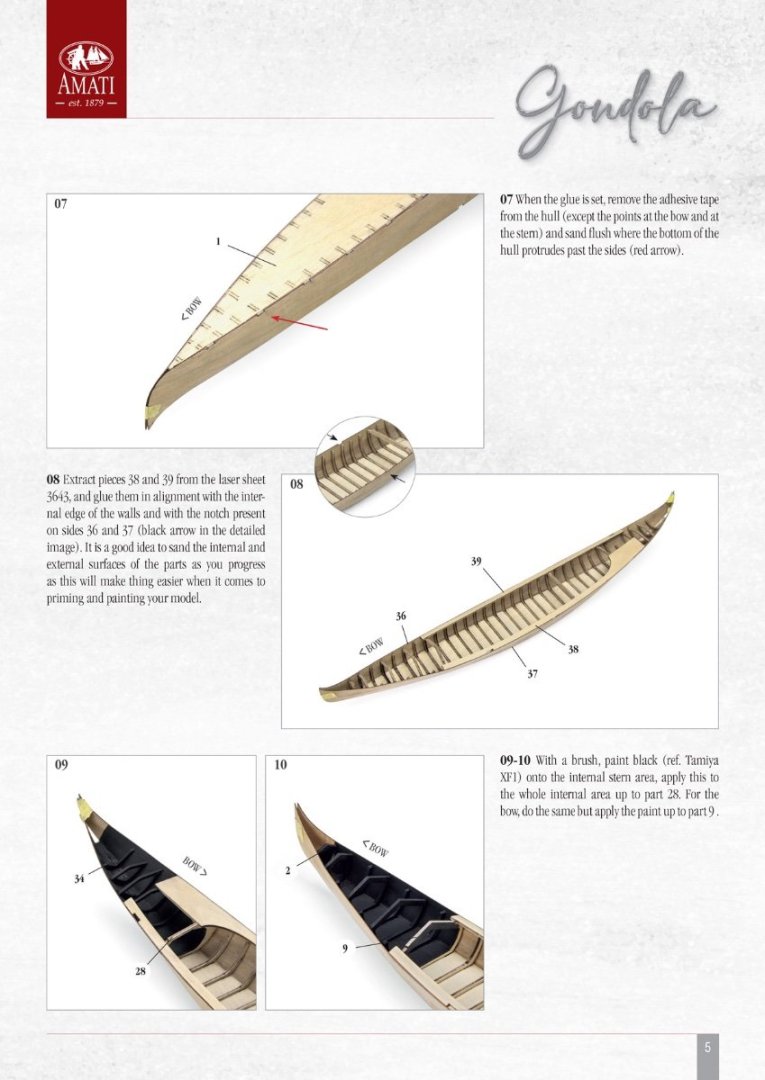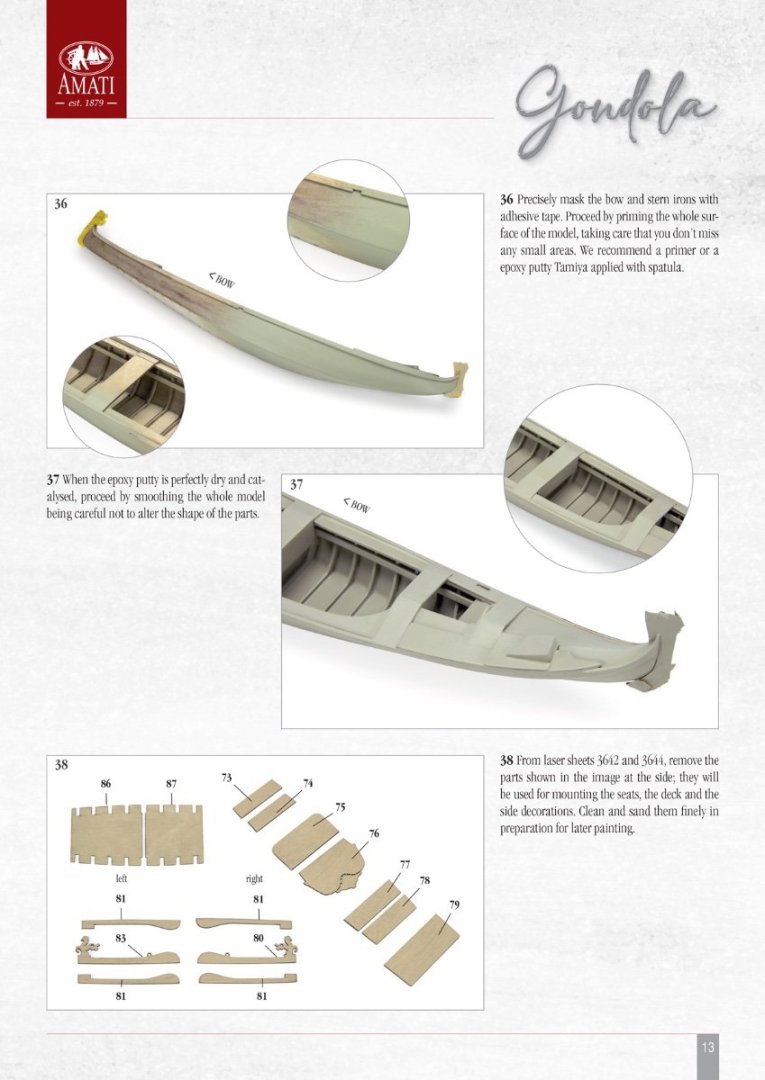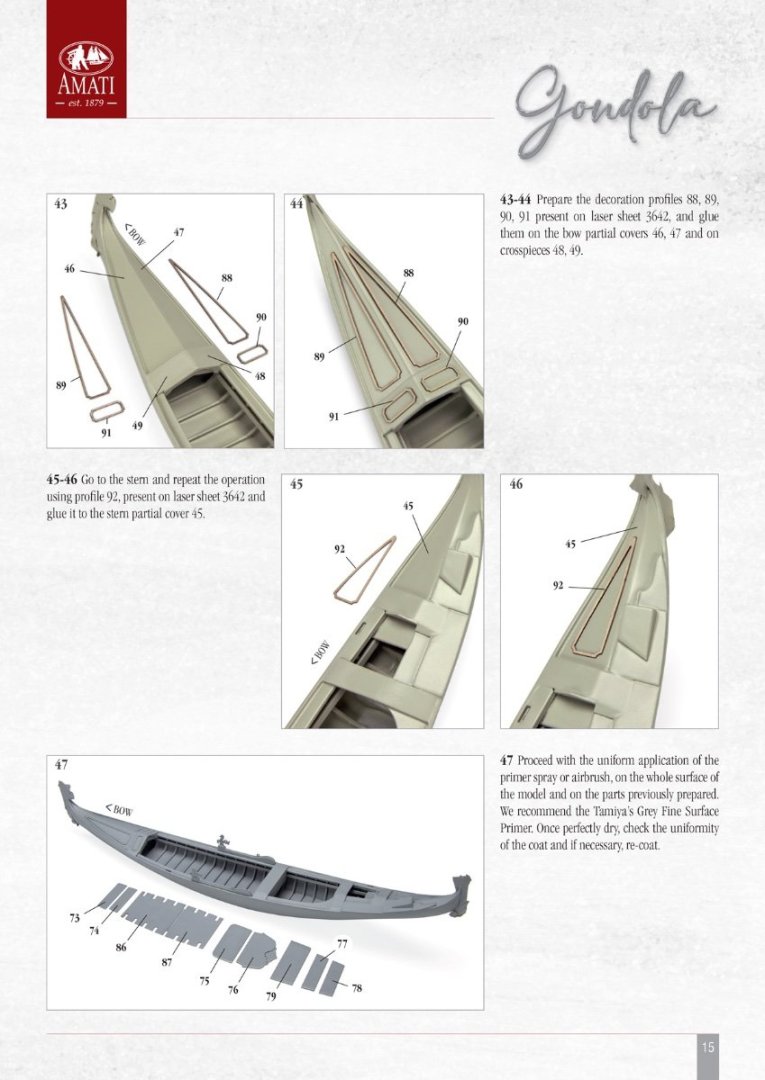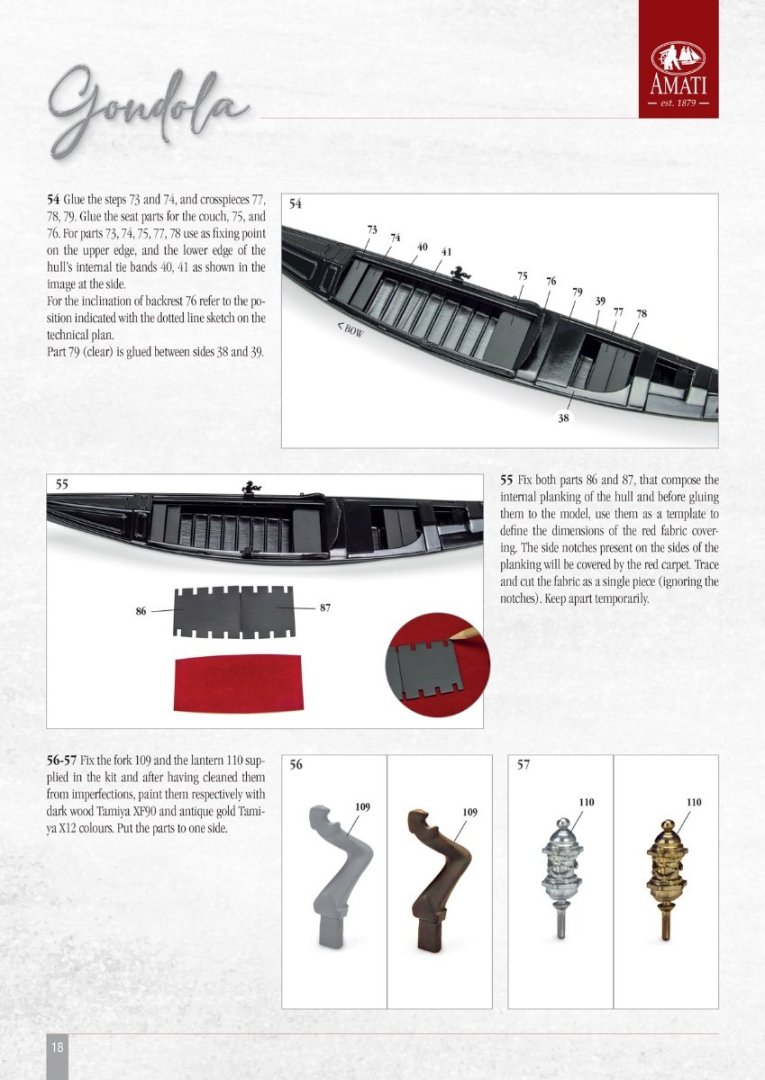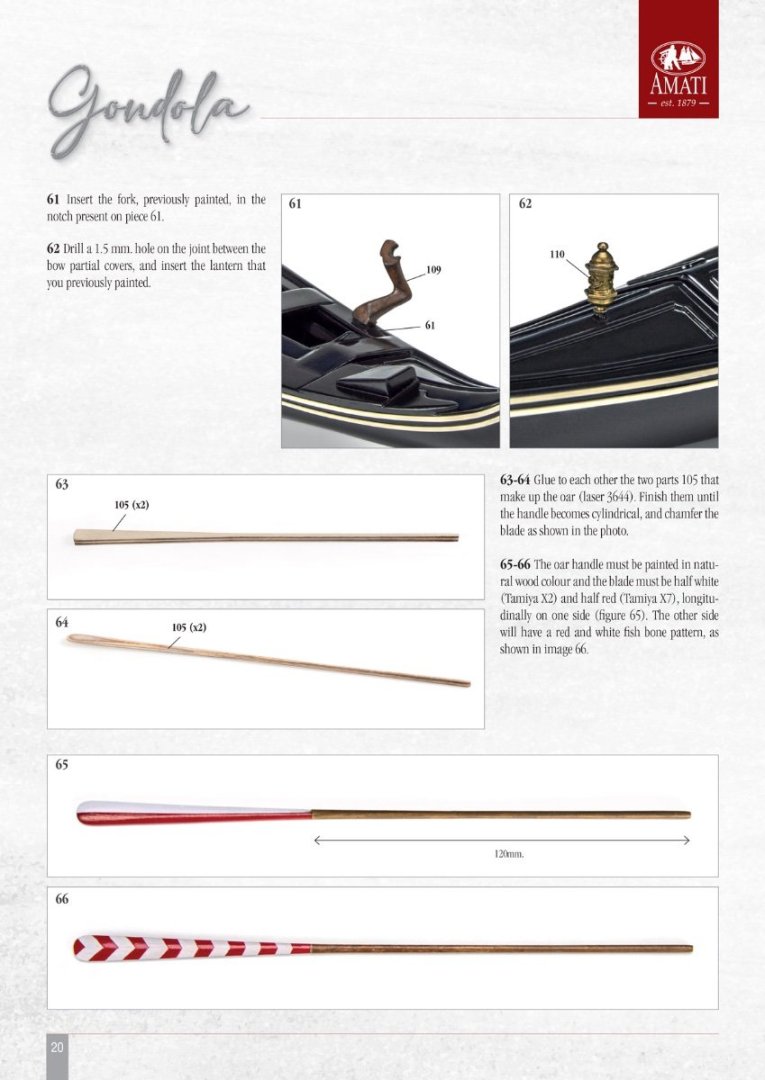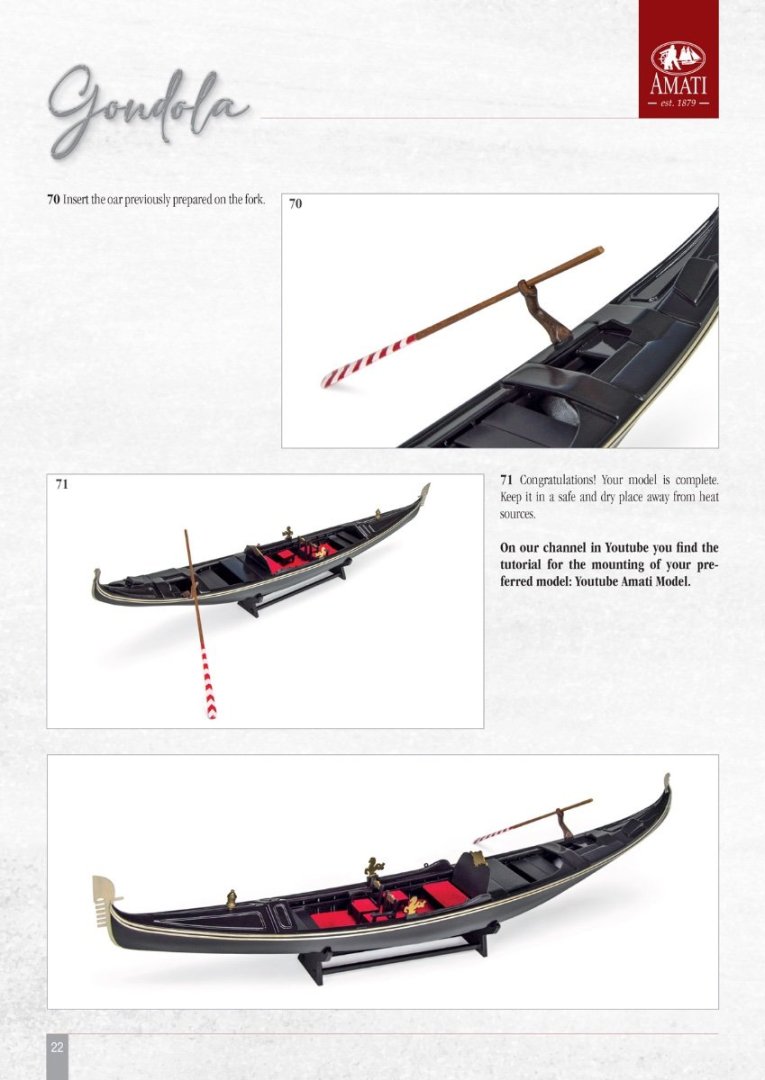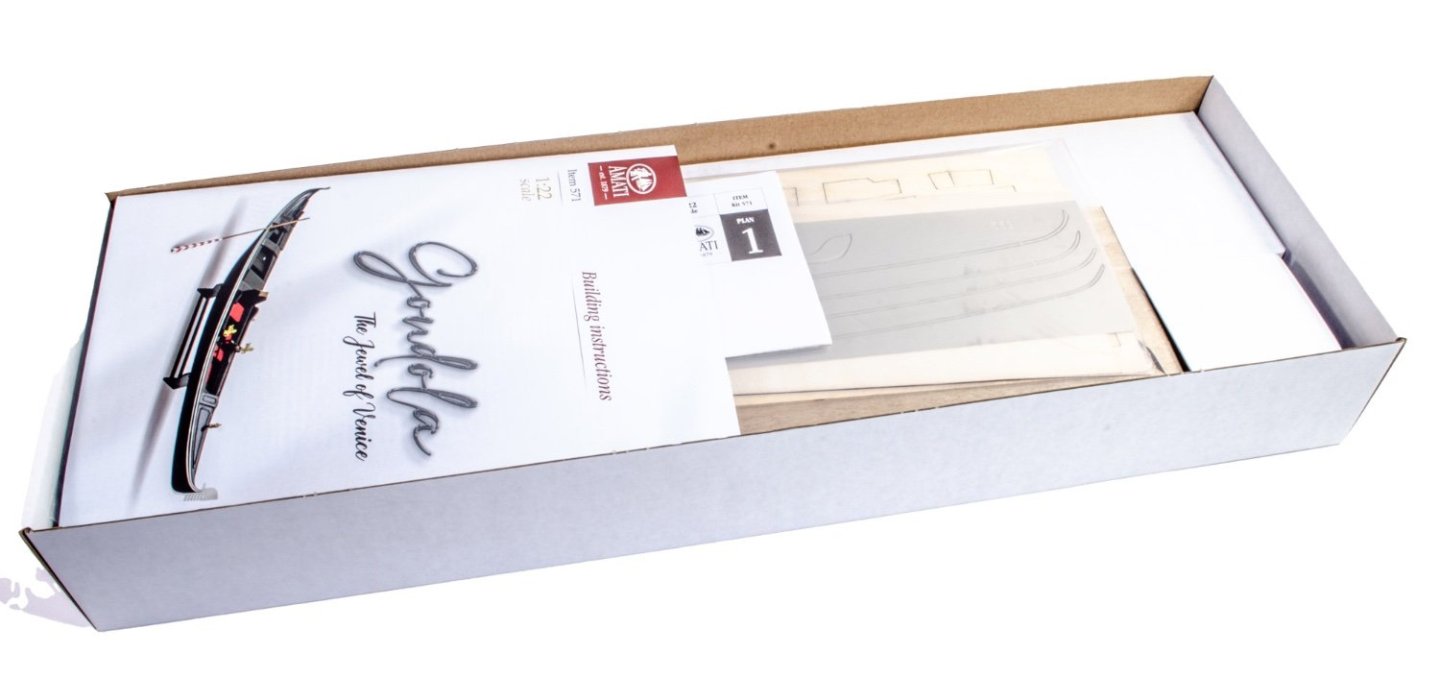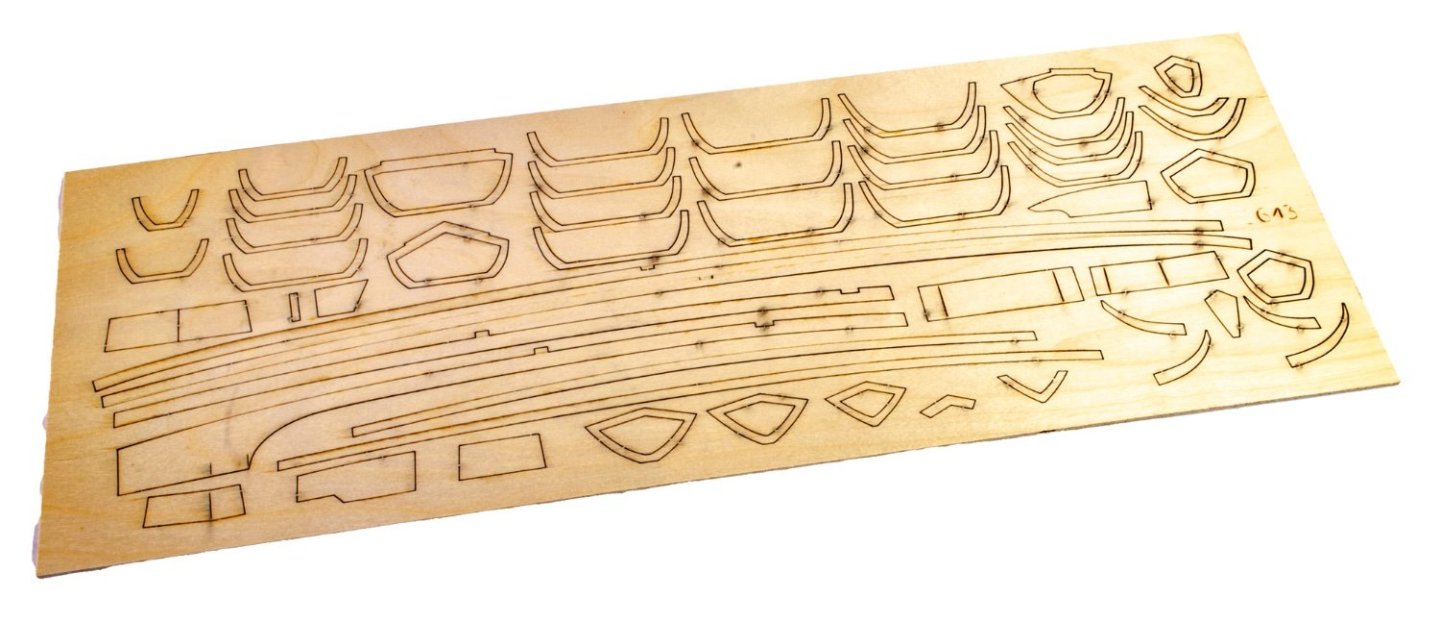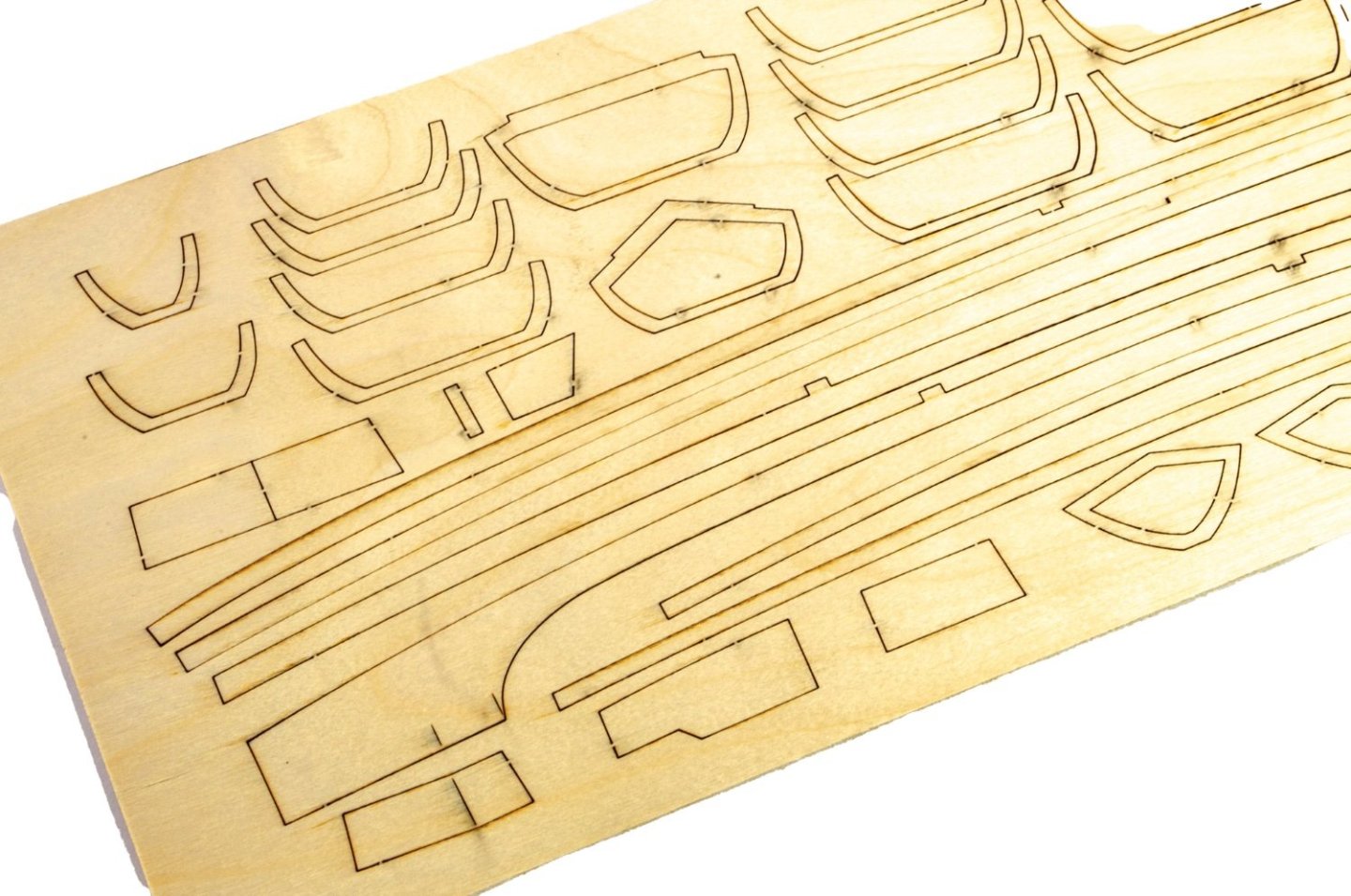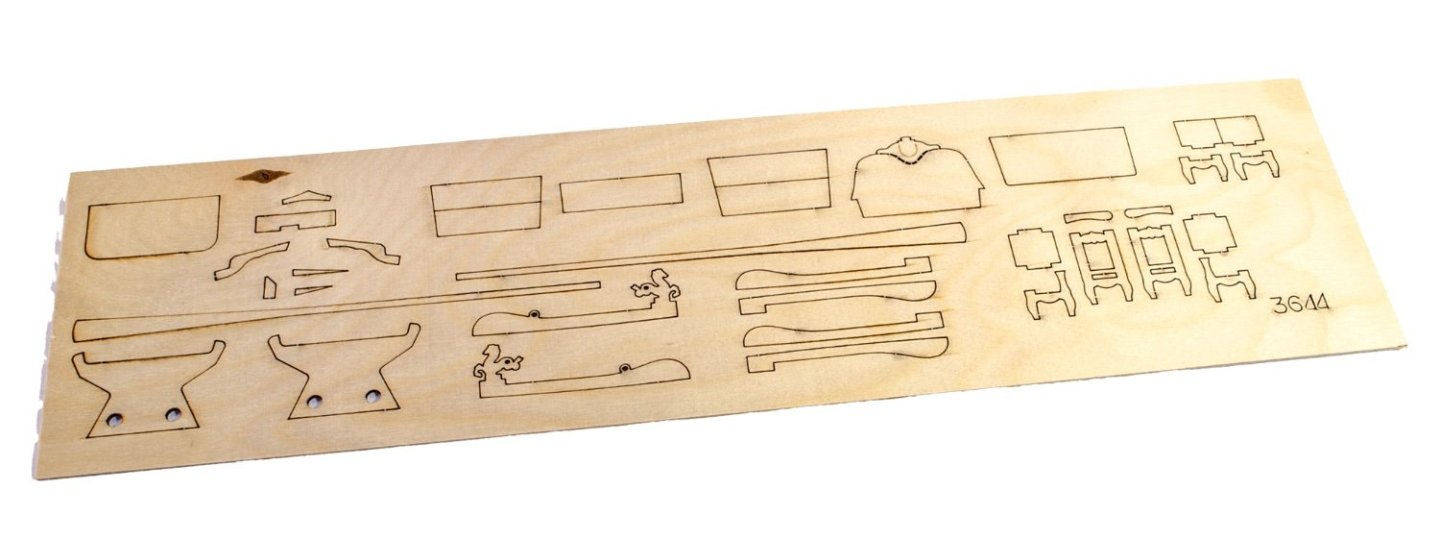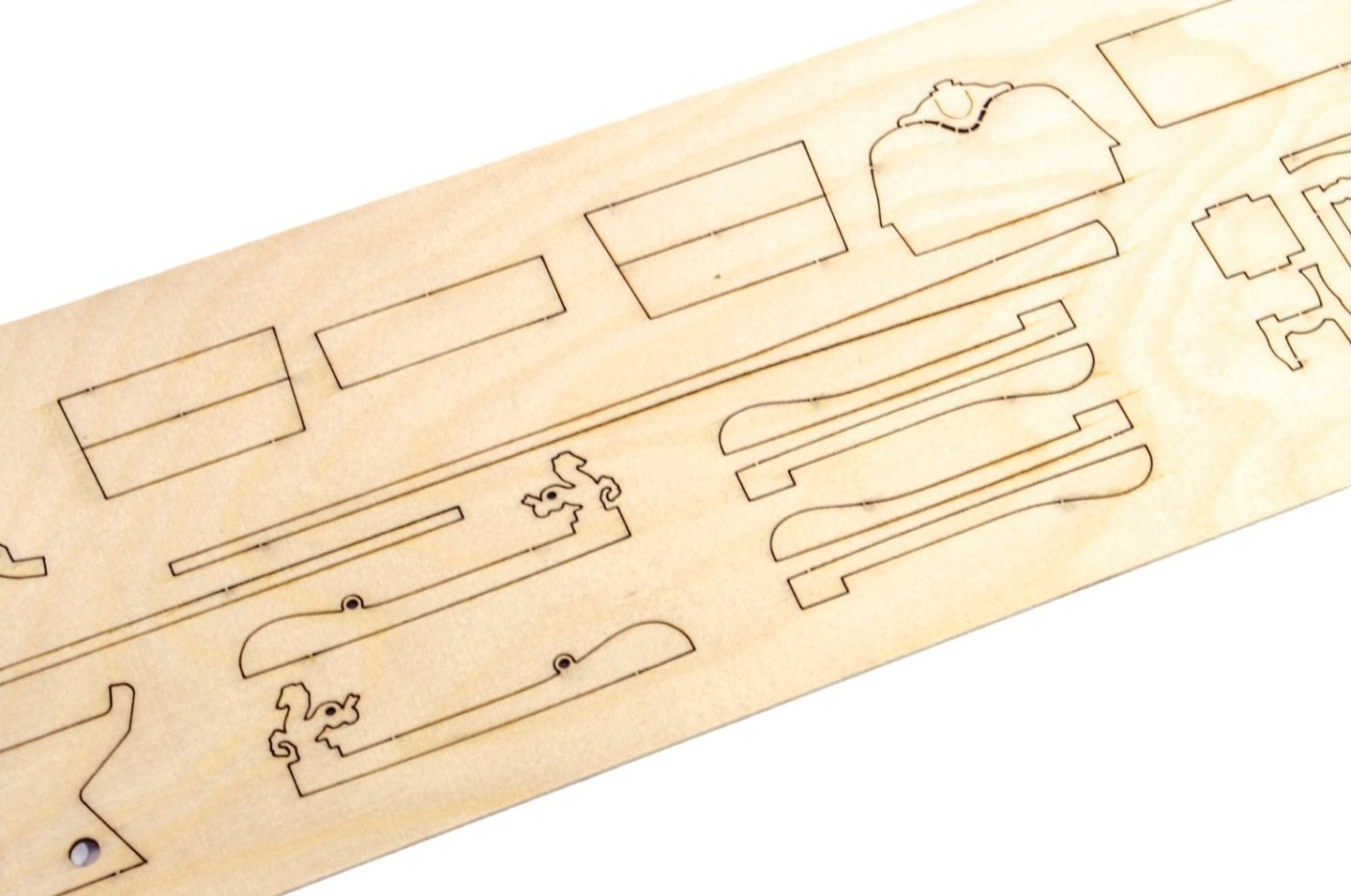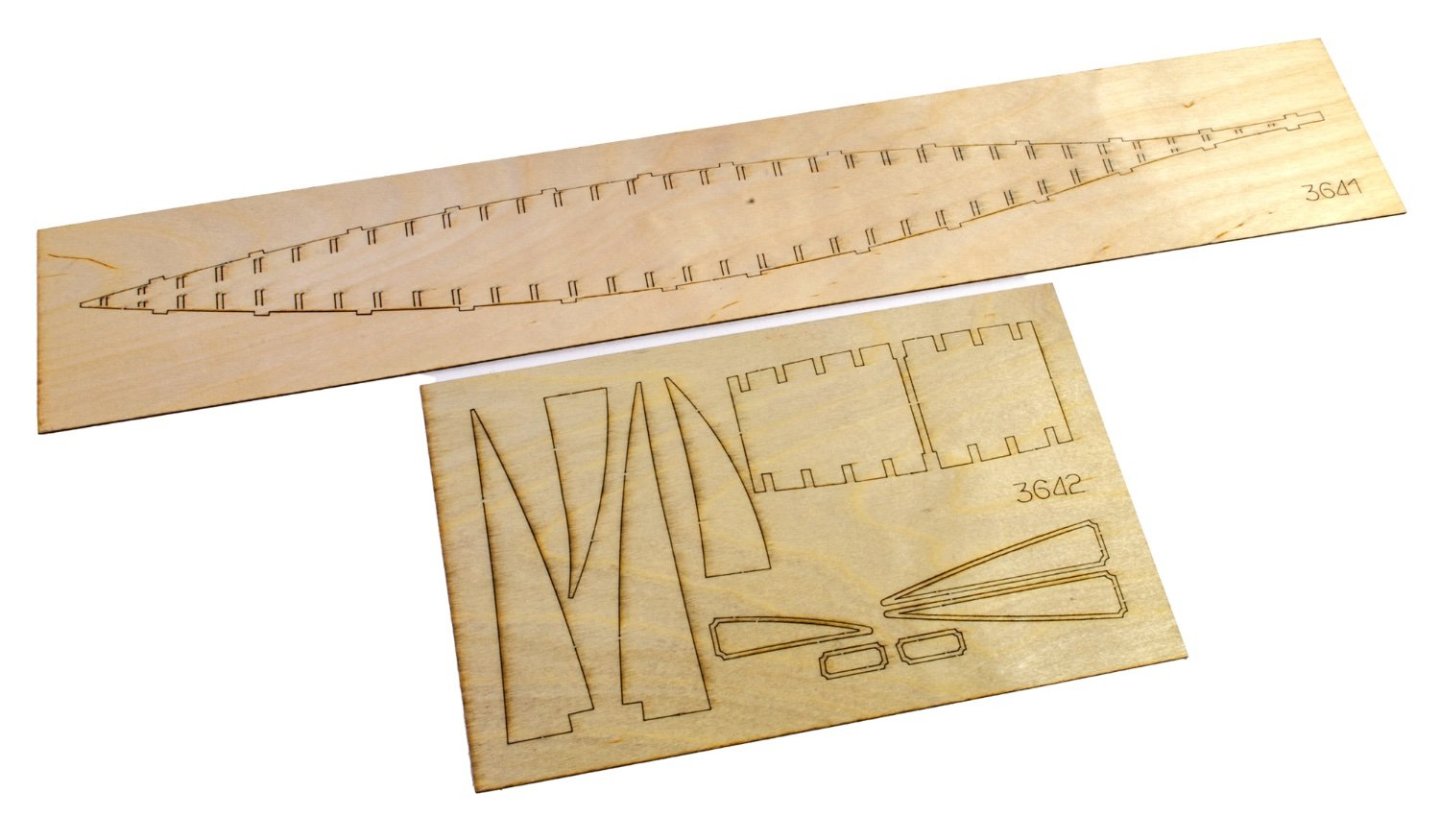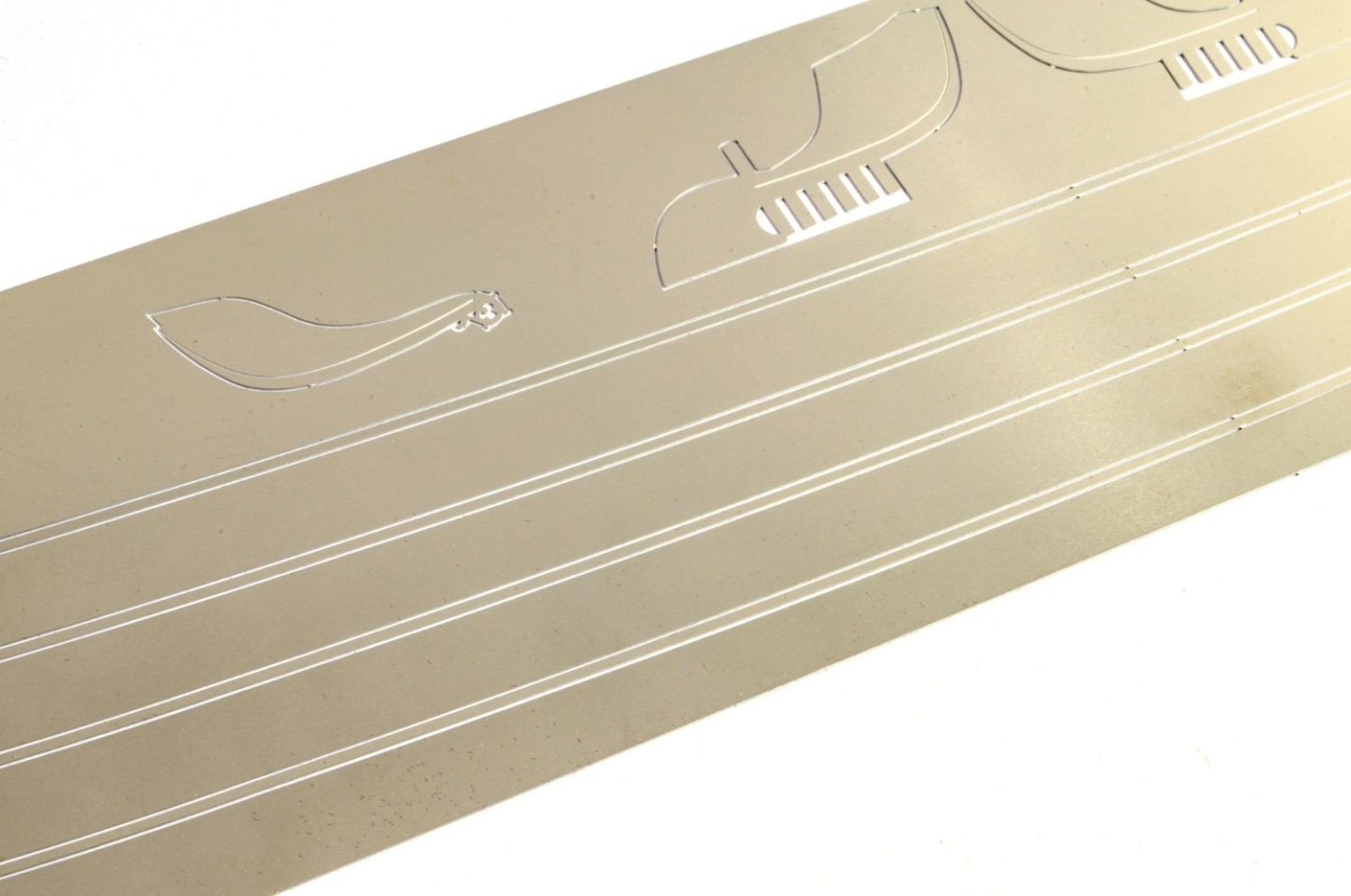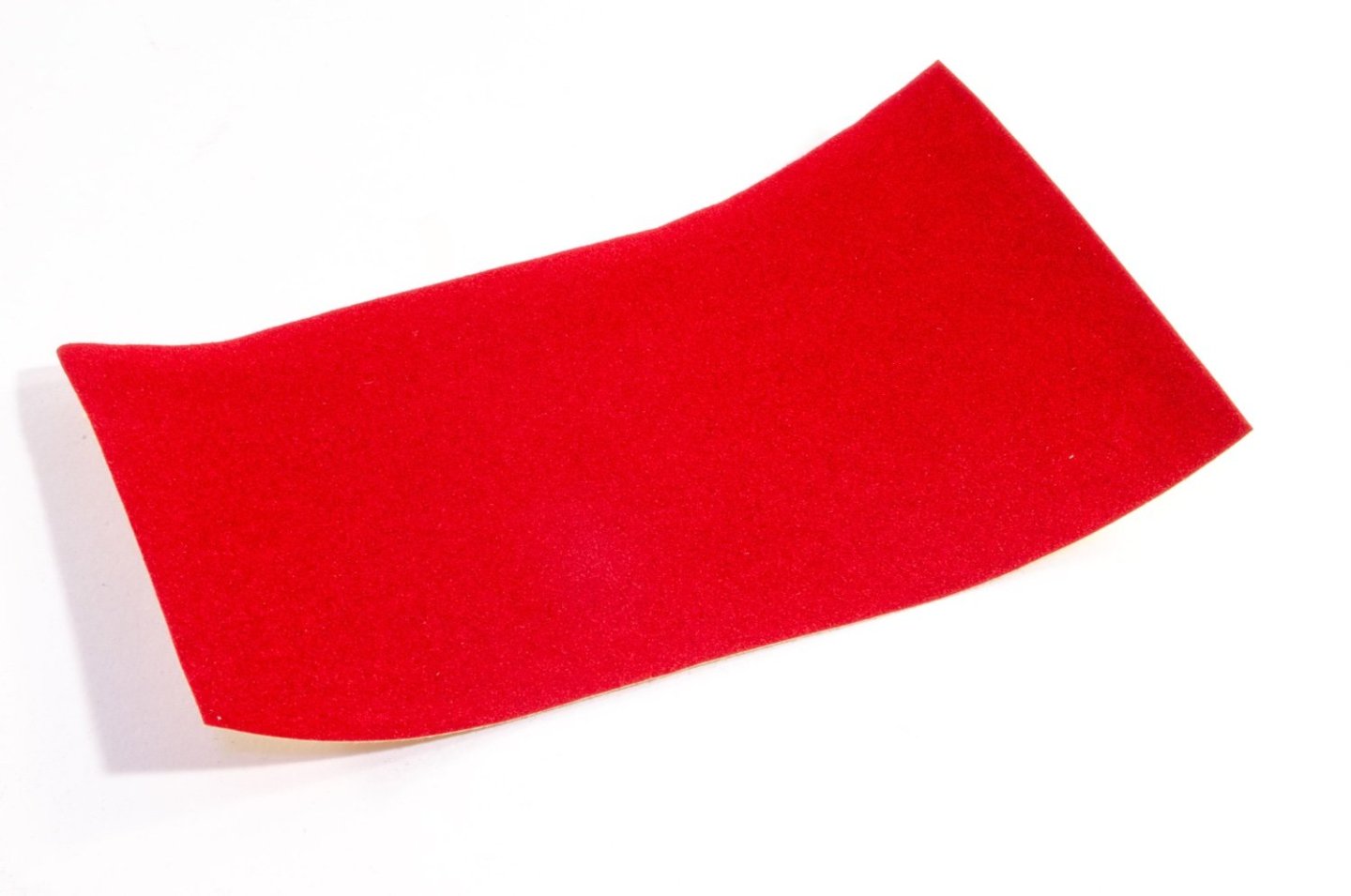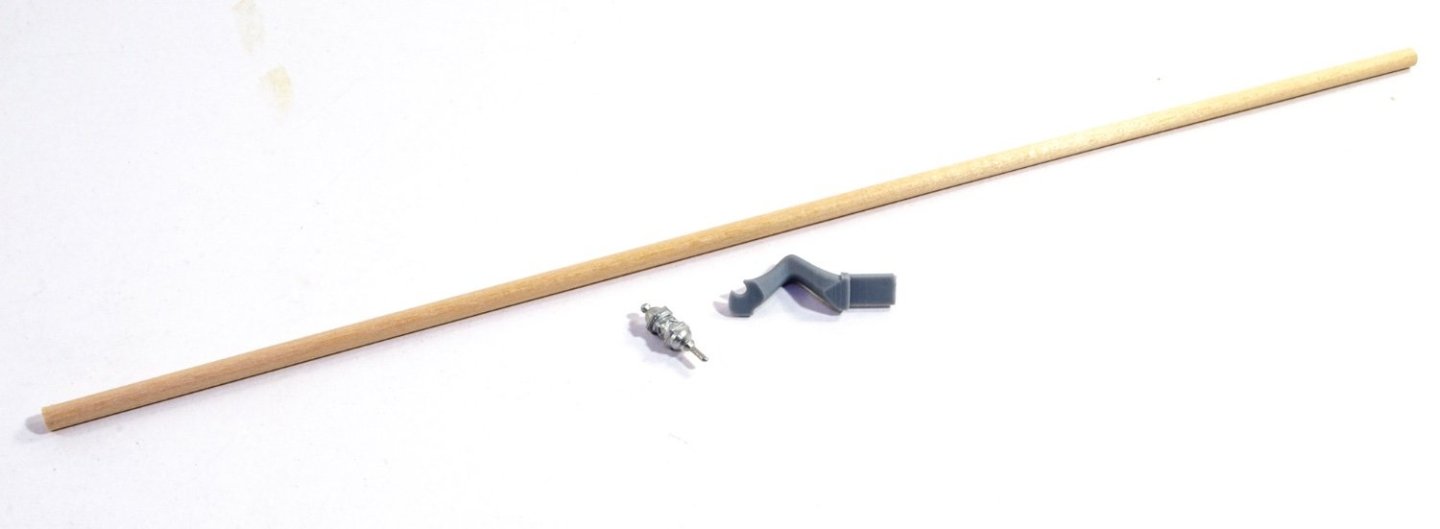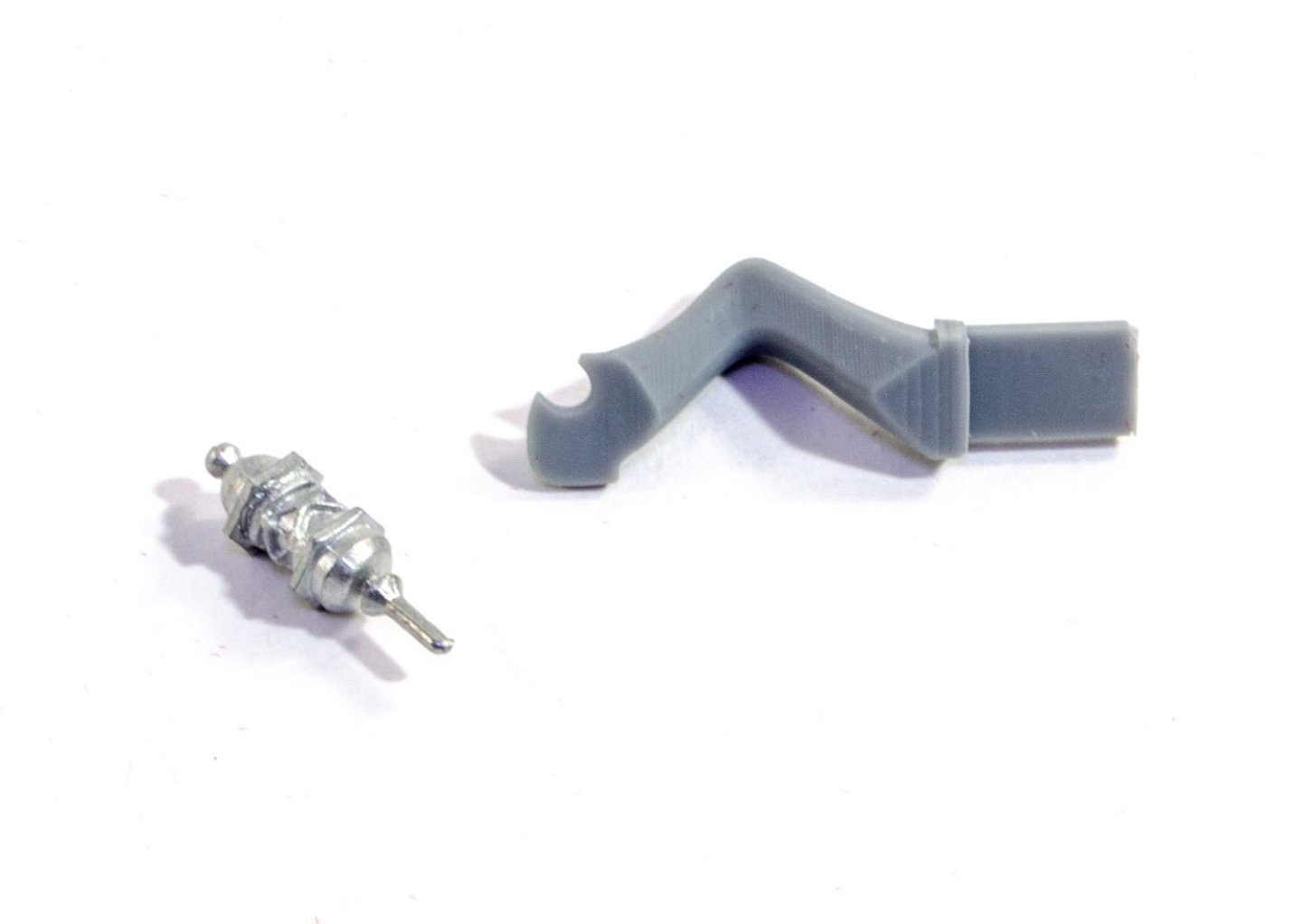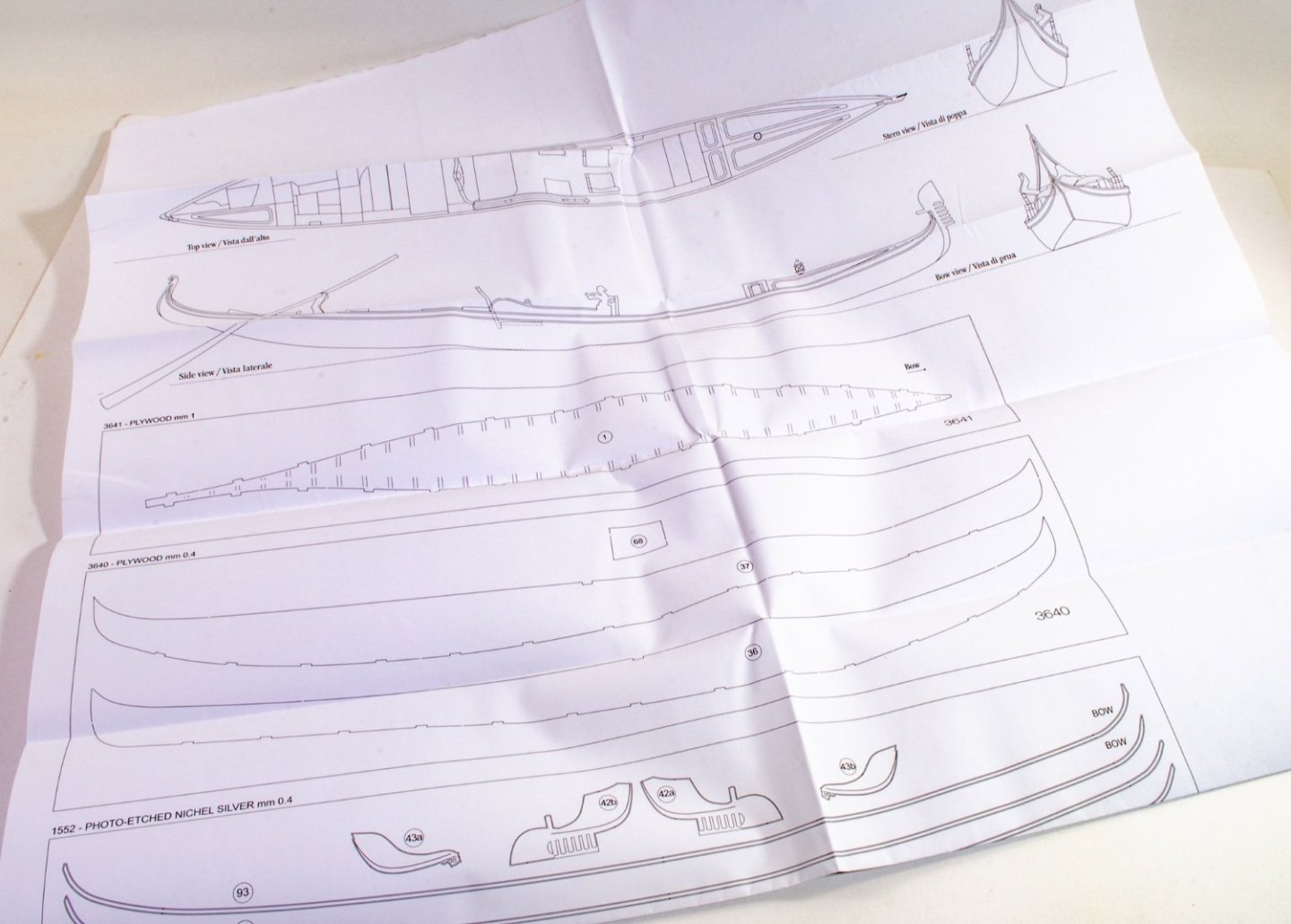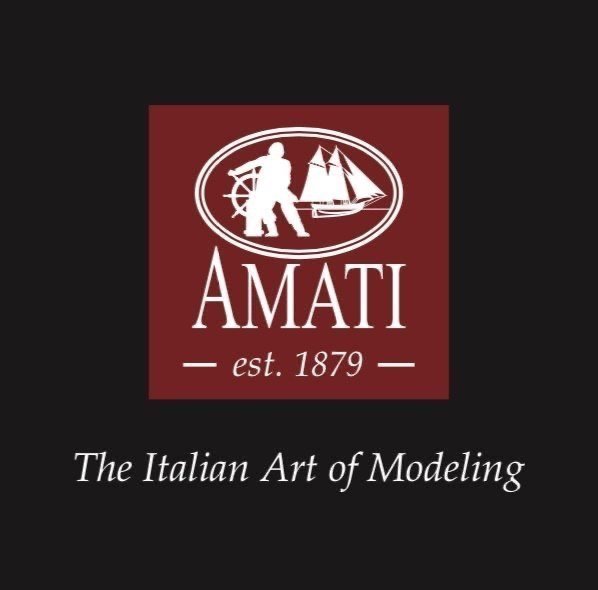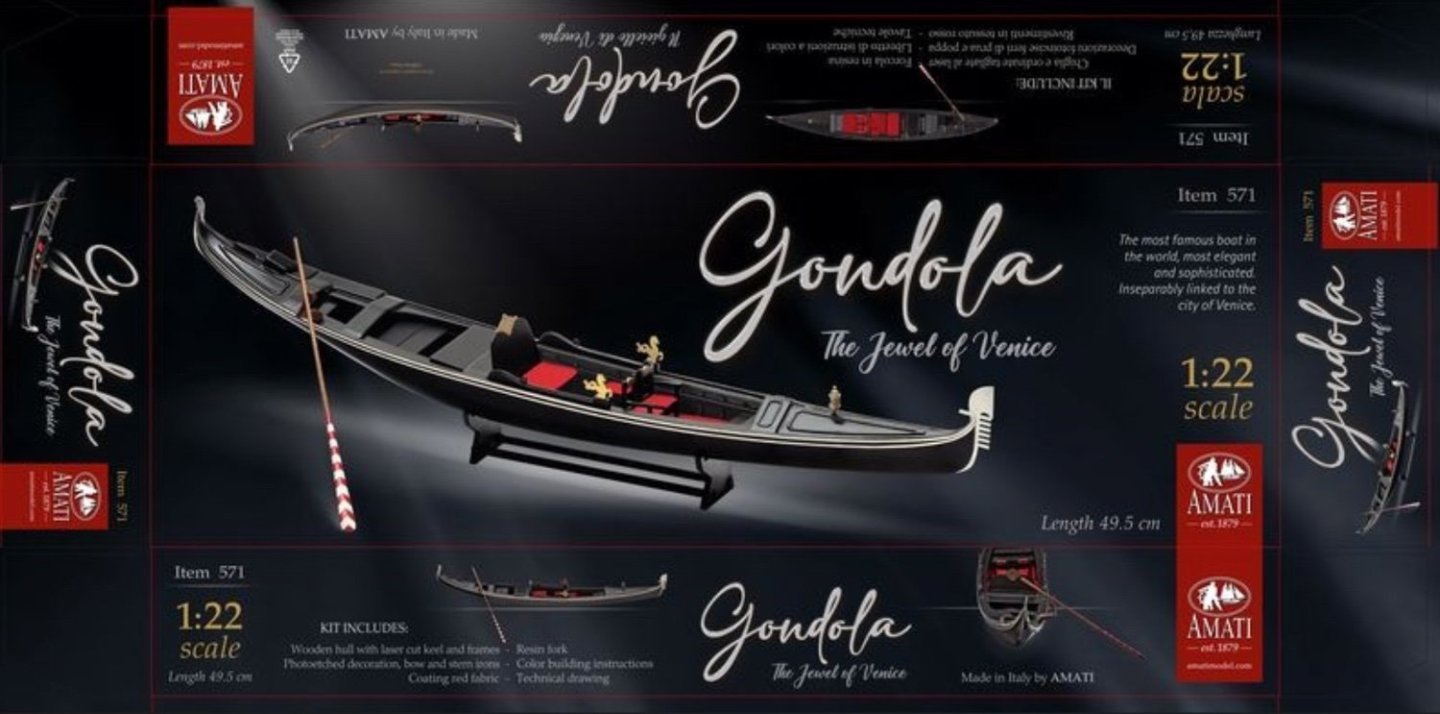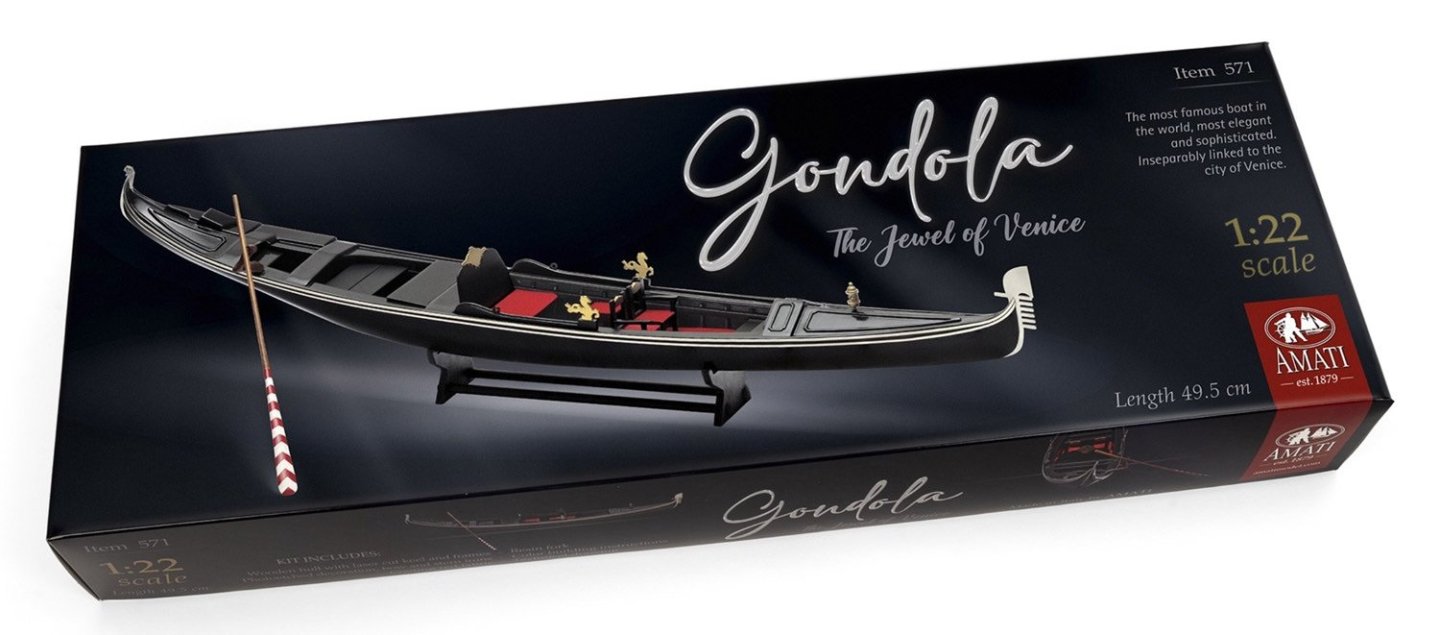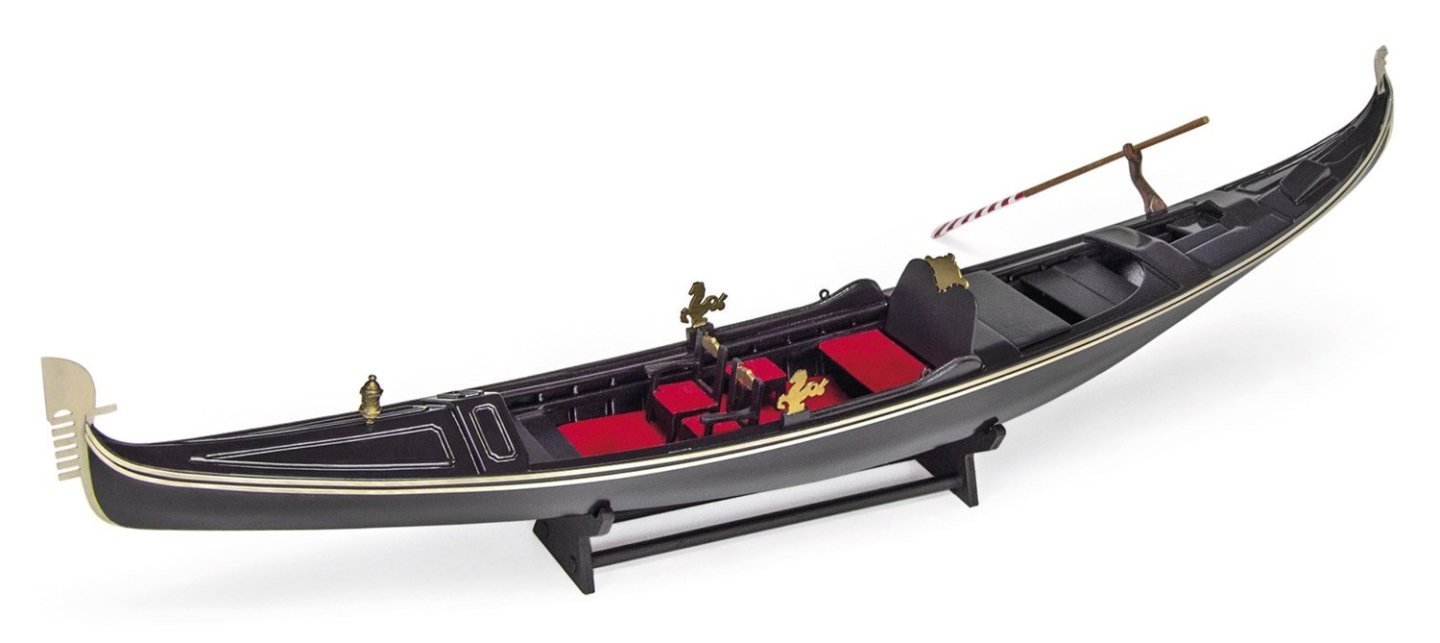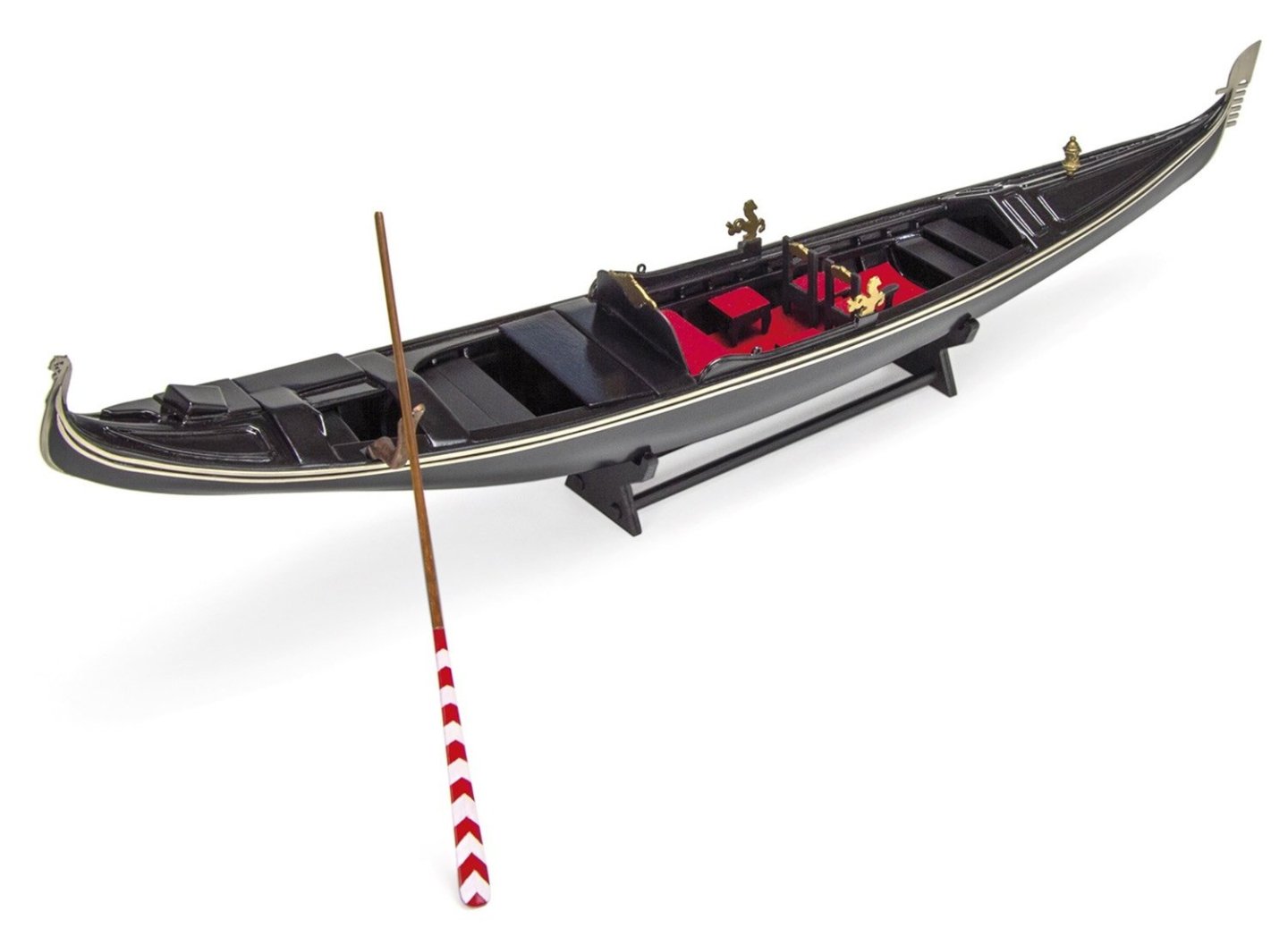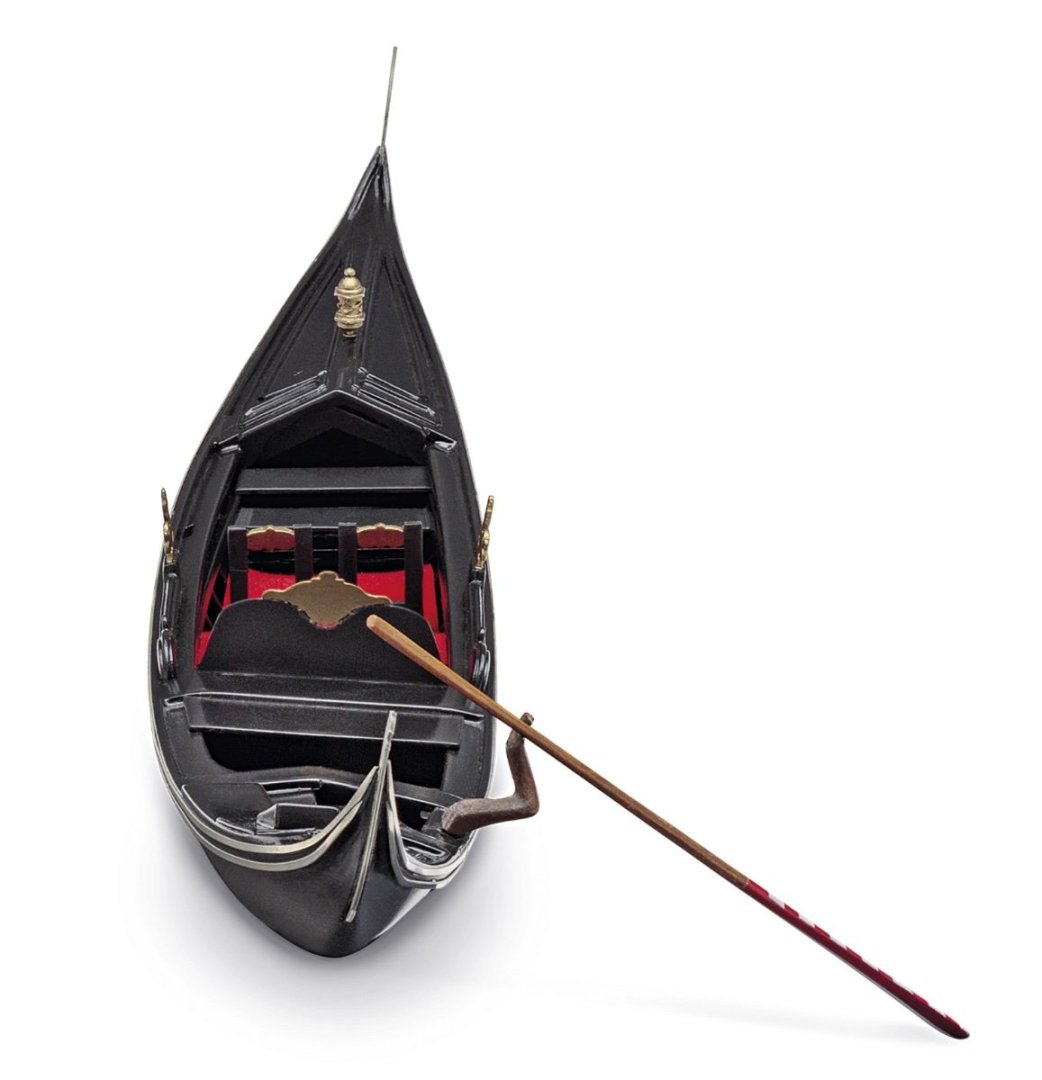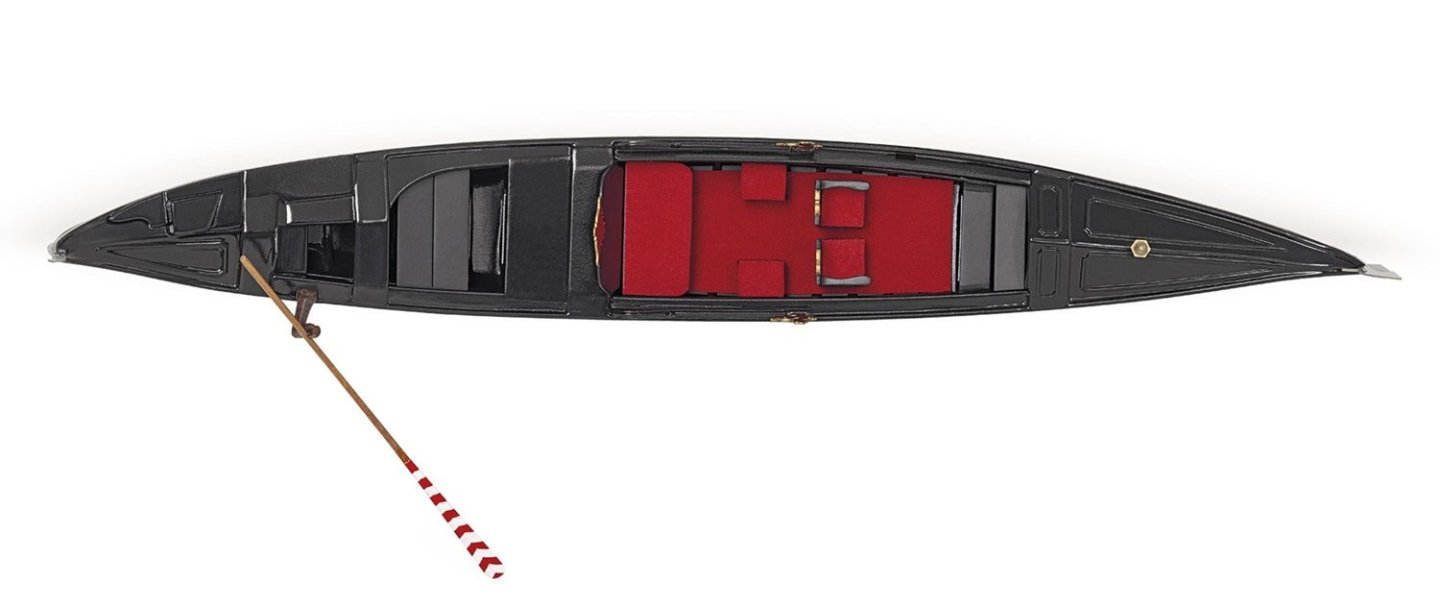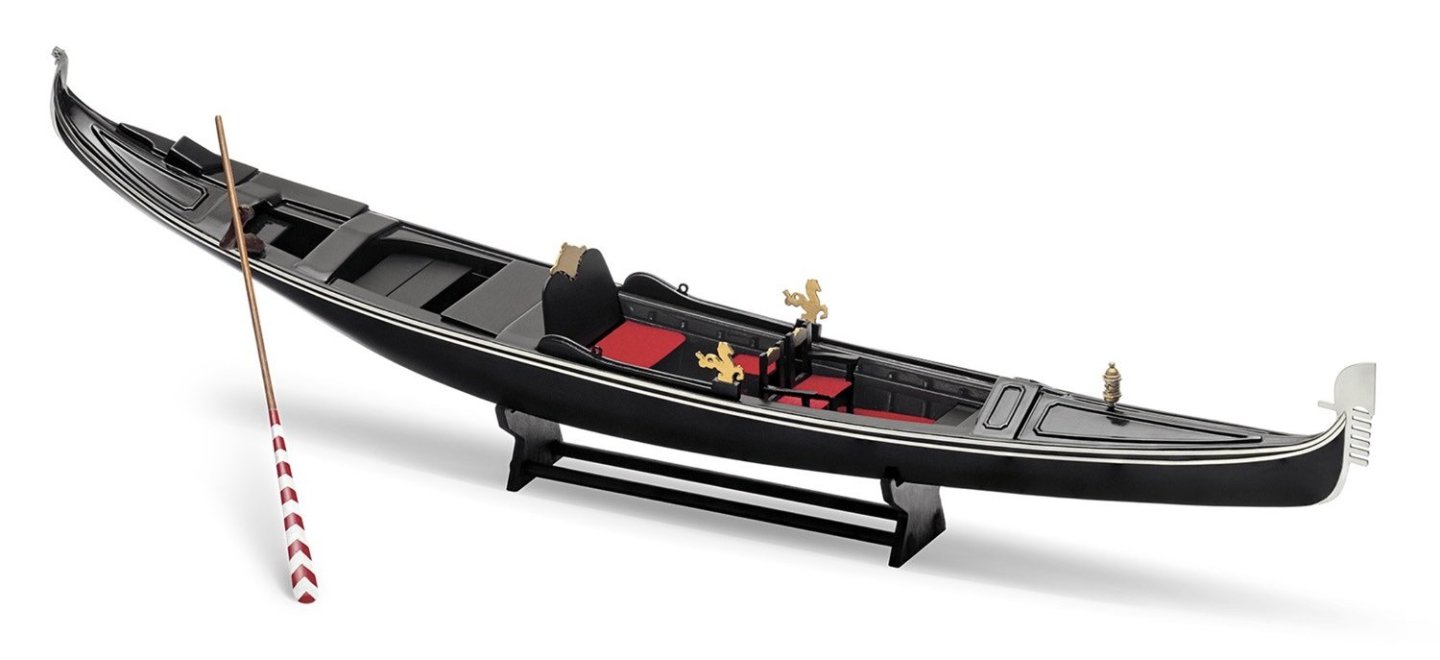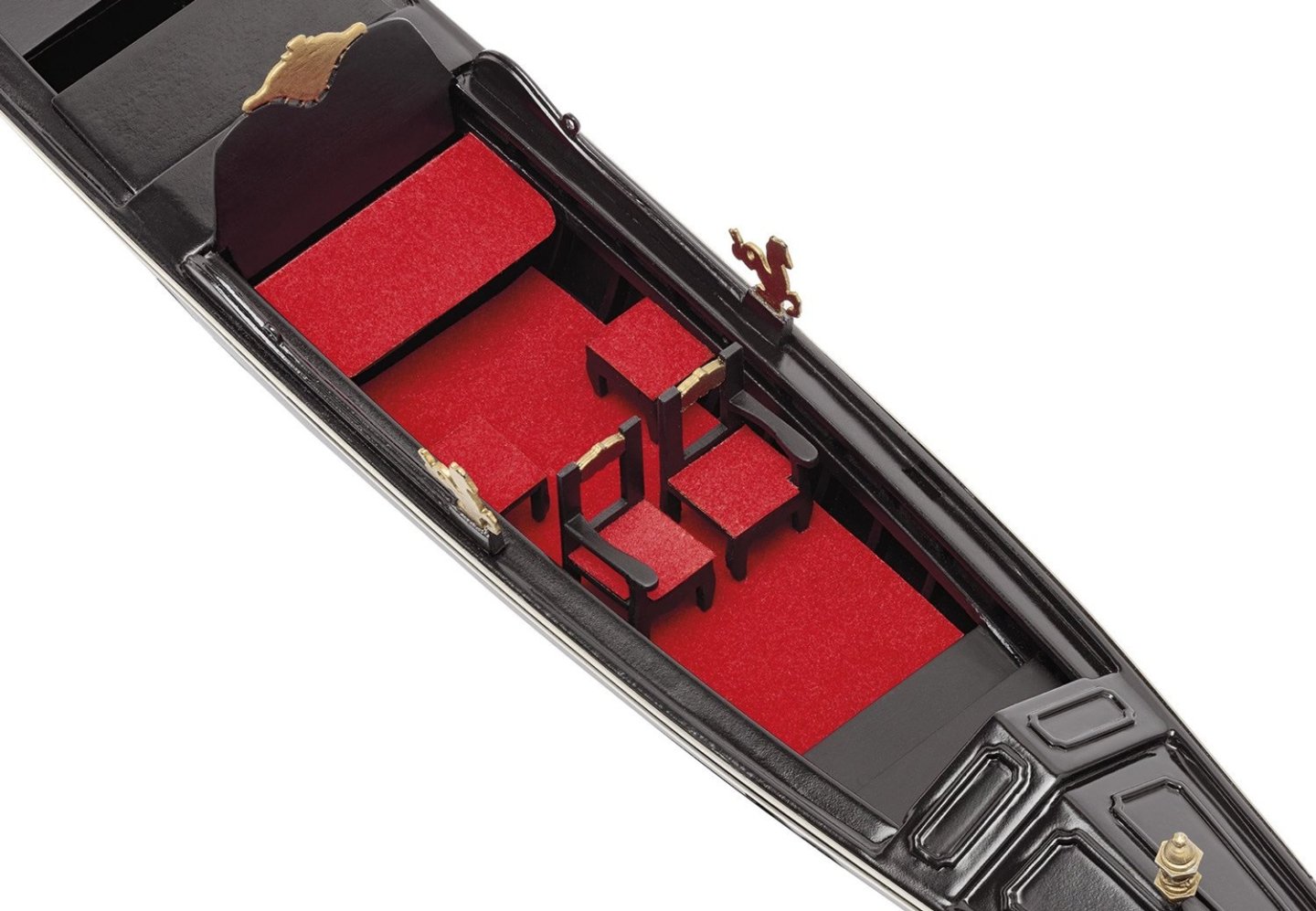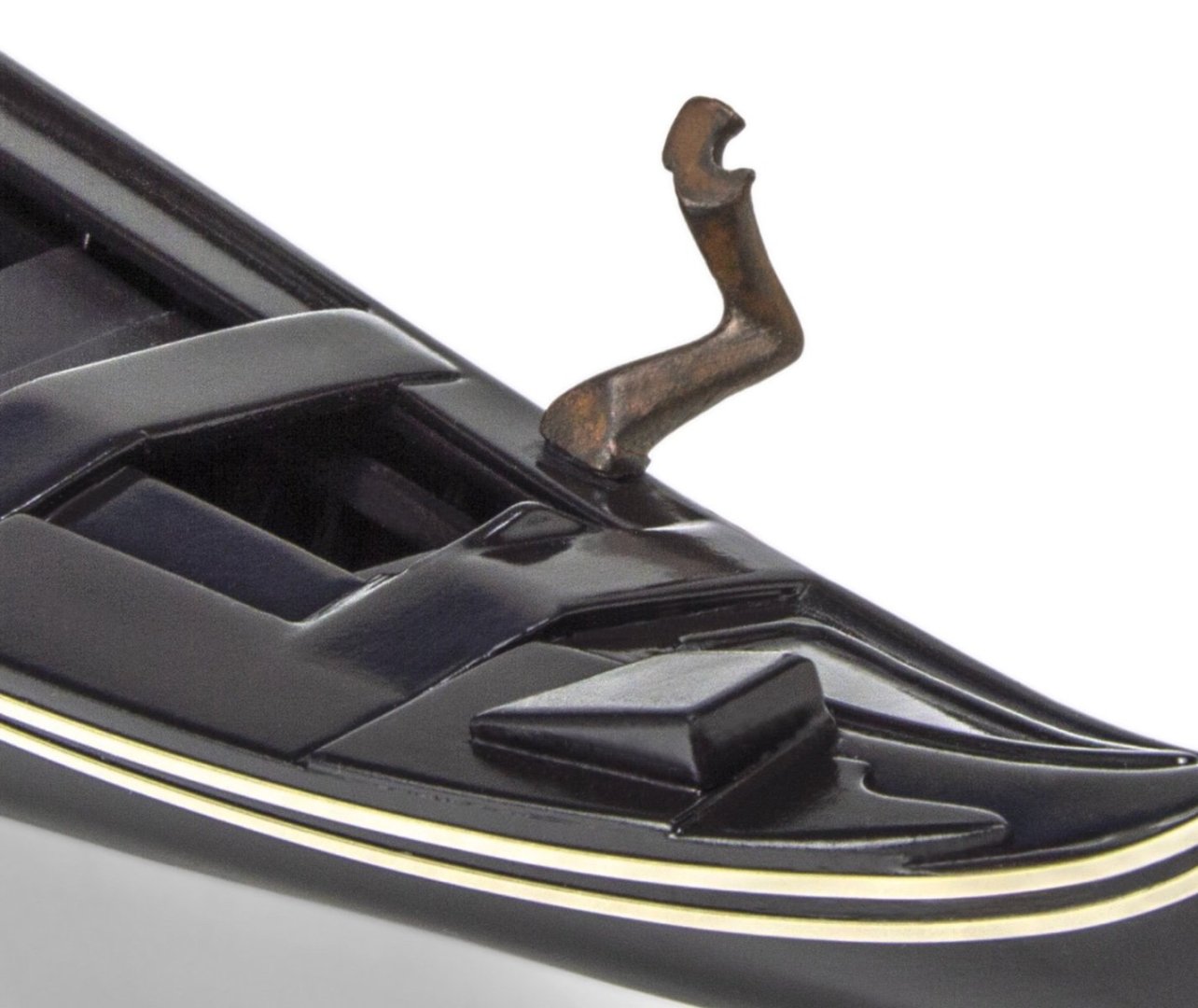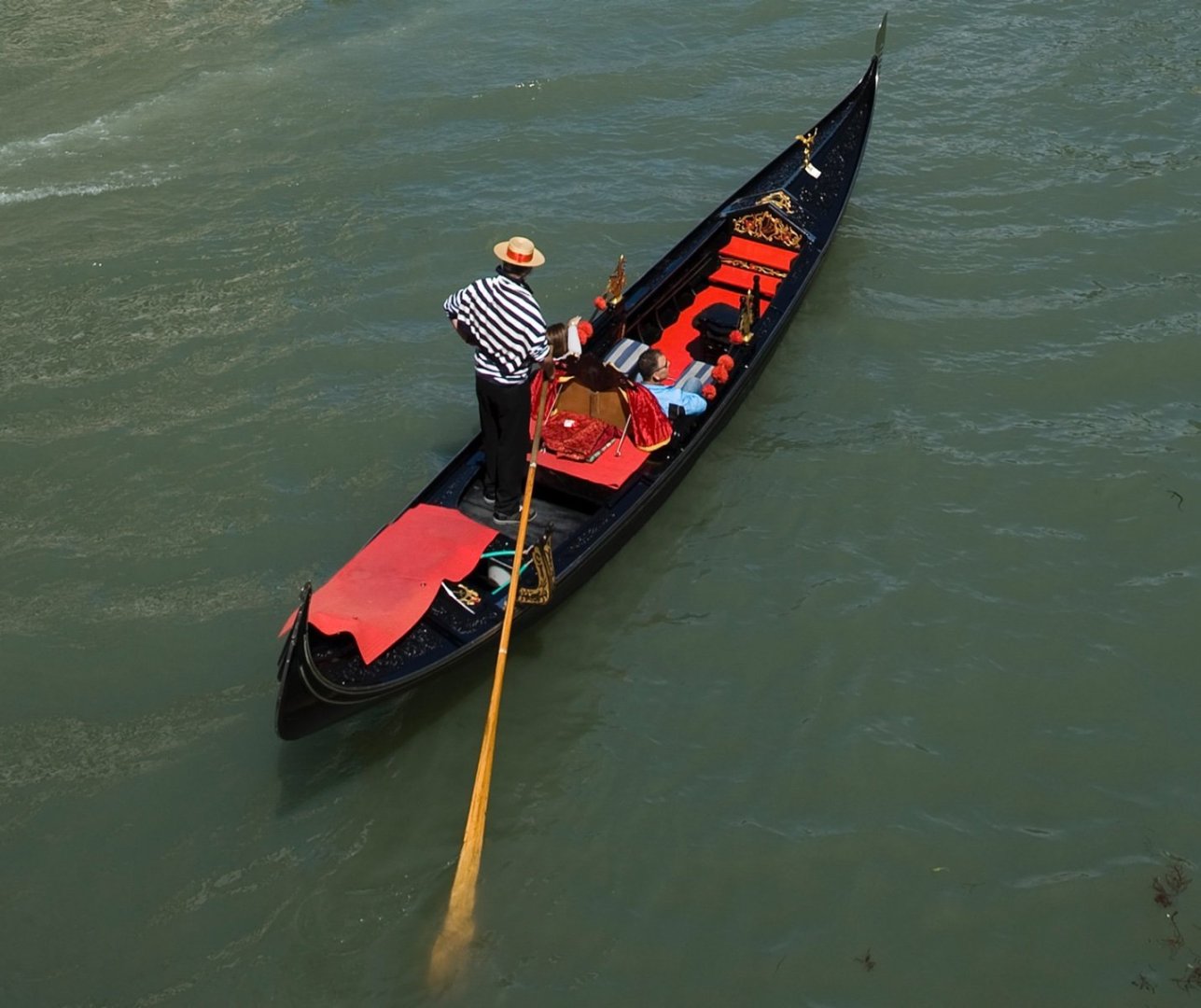-
Posts
5,500 -
Joined
-
Last visited
About James H

- Birthday 02/26/1970
Contact Methods
-
Website URL
www.modelshipworld.com
Profile Information
-
Gender
Male
-
Location
Anderton, Lancashire, UK
-
Interests
Foreign food, travel in general, modelling in timber and plastics, photography and guitar playing.
-

kit review 1:80 Endeavour – America’s Cup 1934 - Amati
James H posted a topic in REVIEWS: Model kits
1:80 Endeavour – America’s Cup 1934 Amati Catalogue # 1700/50 Available from Amati for €78,69 History Endeavour is a J-class yacht built for the 1934 America's Cup by Camper and Nicholson in Gosport, England. She was built for Thomas Sopwith who used his aviation design expertise to ensure the yacht was the most advanced of its day with a steel hull and mast.[1] She was 130-foot (40 m) and launched in 1934 and won many races in her first season including against the J's Velsheda and Shamrock V. She failed in her America's Cup challenge against the American defender Rainbow but came closer to lifting the cup than any other until Australia II succeeded in 1983. Endeavour was designed by Charles Ernest Nicholson, and construction was of steel throughout. She was originally fitted with a flexible boom that allowed the foot of the mainsail to bend into an aerodynamically efficient shape. The 1930 Cup winner Enterprise had demonstrated the advantage of allowing the foot to bend this way, albeit using a completely different mechanism (the "Park Avenue" boom). Endeavour's flexible boom broke during trials, and she sailed the 1934 regatta season with an ordinary, rigid boom. In 2006, Endeavour was sold to Hawaiian resident Cassio Antunes for $13.1M. In 2011, she completed an 18-month refit in New Zealand, during which a carbon-fibre mast and standing rigging were fitted, and some changes were made to the deck layout. In summer 2015, it was reported that Endeavour was again for sale, with an asking price of €19,950,000. (Abridged from Wikipedia) The kit Amati’s Endeavour kit is packed into a sturdy and glossy lid-opening box with a photo of the completed model on the front, plus an important dimension stating that the model has a length of 49.5cm. Curiously, for a tall yacht, the height isn’t given. For your info, the model height (taken from the plan sheet) is approx. 67cm tall and 8.8cm wide. This model is also supposed to be suitable for RC. Under the lid, all of the components are elevated by the packing that holds the single-piece, white styrene hull. The moulding of this looks nigh on perfect with a totally smooth finish. No internals are provided for this if you wish to go RC. You’ll need to fathom motor and shaft mounts yourself. For most of us, that doesn’t matter. The rudder is a separate wooden part. The hull is well packed so that it can’t move about whilst in the box. Two sheets of ply are included. These are actually the only timber sheets in the whole kit! The main sheet contains the single-piece deck with superstructure and mast openings. This will need to be planked. There are straight planks which run centrally, but then you need to begin the next phase of planking from the outside edges, working towards the centre. The beauty of this deck will be in the fitting out. On this sheet, there are other parts which are used to build up the various superstructures such as the central and stern skylights. The second, smaller sheet contains the fore and aft display stand parts and also the yacht’s rudder which needs to be shaped. This yacht will need some glazing and this clear sheet is provided for this purpose. There is a nice bundle of strip material in this kit, from the slotted/milled mast, though to deck planking etc. A small quantity of brass and copper is also included. I have to say the timber quality is excellent and very nicely milled/cut. A single tray of fittings is included, with everything packed into bags within. This includes cleats, portholes, eyelets, drums, winch and arm, wheel, binnacle and rigging cord etc. Fittings quality is up to Amati’s usual high standard. One plan sheet is included with the main drawings at 1:1. Whilst the instruction booklet deals with all things to general construction, plus some other elements such as rudder wheel etc, the plan is what you need to refer to for fittings placements, masting and adding sails and rig. White sail material is included. This has all of the yacht’s sails printed on it. You will need to carefully cut these from the sheet and then finished before fitting. A 24-page colour manual is included. This covers all the main stages of construction, and some of those which are best illustrated in 3D instead of in plan form. All illustrations are very clear, with the specific parts shown in plan form, adjacent to the 3D illustrations, complete with part numbers. These numbers can be referenced from the plan sheet. Conclusion If you like graceful hull lines, but hate planking, this is for you. Even if you need a quick but satisfying ‘between projects’ build, then this could hit the mark. There aren’t too many parts to this build, by both nature of kit design and also due to the vessel herself. Once you’ve planked that ply deck and fitted to the hull, it’s very much a fitting out project. The quality of the plastic hull is excellent and you’ve got a real nice base onto which you can then add paint. No plank lines to fill and rub back endless times. She’ll look great in a custom made acrylic case too, and the kit itself is very reasonably priced. My since thanks to Amati for sending out this kit for us to look at on Model Ship World. Check your local dealer for availability. If unable to purchase via dealer, dead onto Amati to buy directly, via the link at the top of the article. -
 James H reacted to a post in a topic:
San Felipe 1690 by dziadek4444 - Panart - 1:75
James H reacted to a post in a topic:
San Felipe 1690 by dziadek4444 - Panart - 1:75
-

How do I create a build log?
James H replied to Fuzznoggin's topic in How to use the MSW forum - **NO MODELING CONTENT**
Please check the many pinned topics in this area. -
 James H reacted to a post in a topic:
Chris Watton and Vanguard Models news and updates Volume 2
James H reacted to a post in a topic:
Chris Watton and Vanguard Models news and updates Volume 2
-
 James H reacted to a post in a topic:
Chris Watton and Vanguard Models news and updates Volume 2
James H reacted to a post in a topic:
Chris Watton and Vanguard Models news and updates Volume 2
-
 James H reacted to a post in a topic:
Are you an NRG Member???
James H reacted to a post in a topic:
Are you an NRG Member???
-
 James H reacted to a post in a topic:
HMS Sphinx 1775 by mugje - Vanguard Models - 1:64
James H reacted to a post in a topic:
HMS Sphinx 1775 by mugje - Vanguard Models - 1:64
-
 James H reacted to a post in a topic:
Adding a signature to a comment
James H reacted to a post in a topic:
Adding a signature to a comment
-

Adding a signature to a comment
James H replied to PvG Aussie's topic in How to use the MSW forum - **NO MODELING CONTENT**
Once you get your signature, it is applied to every post you ever made. The option for signatures appears after 10 posts. -
 James H reacted to a post in a topic:
HMS Indefatigable 1794 by Glenn-UK - Vanguard Models - 1:64
James H reacted to a post in a topic:
HMS Indefatigable 1794 by Glenn-UK - Vanguard Models - 1:64
-
 James H reacted to a post in a topic:
HMS Flirt by wvdhee - Vanguard Models - 1:64
James H reacted to a post in a topic:
HMS Flirt by wvdhee - Vanguard Models - 1:64
-
 James H reacted to a post in a topic:
HMS Indefatigable 1794 by Glenn-UK - Vanguard Models - 1:64
James H reacted to a post in a topic:
HMS Indefatigable 1794 by Glenn-UK - Vanguard Models - 1:64
-
1:22 Venetian Gondola Amati Catalogue # 571 Available from Amati for around €105 The gondola is a traditional, flat-bottomed Venetian rowing boat, well suited to the conditions of the Venetian lagoon. It is typically propelled by a gondolier, who uses a rowing oar, which is not fastened to the hull, in a sculling manner, and also acts as the rudder. Today's gondolas are up to 11 m long and 1.6 m wide, with a mass of around 350 kg. They are made of 280 hand-made pieces using eight types of wood (lime, oak, mahogany, walnut, cherry, fir, larch and elm). The process takes about two months; in 2013, the cost of a gondola was about 38,000 euros. The oar or rèmo, is held in an oarlock known as a fórcola. The fórcola is of a complicated shape, allowing several positions of the oar for slow forward rowing, powerful forward rowing, turning, slowing down, rowing backwards, and stopping. The ornament on the front of the boat is called the fèrro (meaning iron) and can be made from brass, stainless steel, or aluminium. It serves as decoration and as counterweight for the gondolier standing near the stern. The gondola has existed in Venice since the 11th century, being first mentioned by name in 1094. It is estimated that there were eight to ten thousand gondolas during the 17th and 18th century, but there are only around four hundred in active service today, with virtually all of them used for hire by tourists. The uniqueness of the gondola includes its being asymmetrical along the length, making the single-oar propulsion more efficient. For centuries, the gondola was a major means of transportation and the most common watercraft within Venice. In modern times, the boats still do have a role in public transport in the city, serving as traghetti (small ferries) over the Grand Canal operated by two oarsmen. The kit This is quite a new kit from Amati, and who better to realise a scale model of a Gondola, than an Italian company. This particular subject appears to represent a modern Gondola, which is still no bad thing as I’ve seen a lot of these myself and they are beautiful vessels. This isn’t the first Gondola released by Amati; they did a model of an 1882 vessel (#1600), with a covered passenger section, which was 1:20 scale and is now unavailable. Original Amati Gondola kit The new kit is a very different model. As is always the case, this kit is packaged into an attractive and high quality, glossy box, with a single photo of the finished Gondola on the lid, and a couple of other finished views on the sides. The vessel is finished in its famous satin black, and the artwork design reflects this. Despite the box’s depth, the actual components don’t occupy too much space, with a few packets of flat sheet parts included, plus a single, large plan, manual etc. We’ll look at these parts now. You could say that this model is very much a plank-on-frame (POF) build, with a series of ‘C’ frames which sit upon a flat, ply floor, sheathed initially with single-piece timber sides. It’s quite a simple approach to building but allows the model to be fitted out and furnished easily, whilst also displaying elements of the hollow hull. The model also needs to have its interior painted black during different phases of the build, due to those areas still being within eyesight when finished. Several thin ply sheets are provided which hold the parts for the frames, footboards, strakes etc. Here you see the frames sheet, with side elements. A little later, you can see a number of selected manual pages, so you’ll get a better idea of construction. Incidentally, the single plan sheet isn’t what you use for main construction guide. The model is mostly don’t via the manual photos, with the plan only really giving an idea of the finished model. This ply sheet contains parts for the oar, display stand, and some visible interior bulkheads. Also visible are the seats. These will be finished with a material which looks like crushed red velvet. On these two ply sheets, you can clearly see the asymmetrical floor of the gondola with engraved positions for the frames, and also side tabs which will key into the single-piece sides, ensuring that alignment is perfect. More turtle deck parts can be seen here, as long as the tabbed floor sections which slot into the frames. Here you can see the Gondola’s side panels with the tabs that correspond with the flat, ply vessel bottom. That was the last of the flat timber sheets, but included is a large sheet of steel photo-etch. This carries the prow and stern shapes, plus two ornamental strakes which lie down each side of the hull. A reasonably sized sheet of material is included which represents the crushed red velvet of the Gondola interior, as well as for the seat furnishings. Lastly, a single length of dowel is included which is for the oar construction, a cast metal lamp, and the oarlock in grey resin. Instructions As I’ve already stated, the model is mostly built using just the stages from the manual, and not the plan sheet. All photos and instructional text are nice and clear and describe in good detail, exactly what the modeller must do at each stage. Photography is excellent and every picture is perfect reference for your build. Conclusion When I came into the hobby around 22yrs ago, the original Amati Gondola was a kit I always coveted, having a copy of their catalogue. For whatever reason, I missed out on that kit and eventually forgot about. Being sent this new kit to review has more than made up for that as this look a beautiful and beautifully simple model to build, but one that’s very attractive. I love watching the Gondolas when I visit Venice, and this model very much captures the evocative appeal of this type of vessel. Something a little mysterious. Maybe I’ve been watching too many old films too! Amati’s Gondola is also a very affordable kit that offers plenty for the builder. As a modeller of primarily warships, this is the sort of side project that I very much enjoy, and as soon as the opportunity presents, I will open a build log for this. My sincere thanks to Amati for sending this kit for review here on Model Ship World. To buy directly, click the link at the top of this article, or visit your local Amati dealer.
-
Caldercraft stuff is lovely, but I sort of see it very much as legacy these days, albeit one of the better legacy companies. Having a fresh, modern version with precious timber, really makes this shine. Definitely worth the extra £/$.
- 7 replies
-
- vanguard models
- cutter
-
(and 1 more)
Tagged with:
-

Kit review 1:20 Grand Banks Heritage 46 - Amati
James H replied to James H's topic in REVIEWS: Model kits
I think this one has new packaging. -

I've lost it....need a refresher to get my confidence back
James H replied to bigcreekdad's topic in Wood ship model kits
Take a look on the VM site. The kits are skill rated too so you can pick something you feel to be in your ballpark.
About us
Modelshipworld - Advancing Ship Modeling through Research
SSL Secured
Your security is important for us so this Website is SSL-Secured
NRG Mailing Address
Nautical Research Guild
237 South Lincoln Street
Westmont IL, 60559-1917
Model Ship World ® and the MSW logo are Registered Trademarks, and belong to the Nautical Research Guild (United States Patent and Trademark Office: No. 6,929,264 & No. 6,929,274, registered Dec. 20, 2022)
Helpful Links
About the NRG
If you enjoy building ship models that are historically accurate as well as beautiful, then The Nautical Research Guild (NRG) is just right for you.
The Guild is a non-profit educational organization whose mission is to “Advance Ship Modeling Through Research”. We provide support to our members in their efforts to raise the quality of their model ships.
The Nautical Research Guild has published our world-renowned quarterly magazine, The Nautical Research Journal, since 1955. The pages of the Journal are full of articles by accomplished ship modelers who show you how they create those exquisite details on their models, and by maritime historians who show you the correct details to build. The Journal is available in both print and digital editions. Go to the NRG web site (www.thenrg.org) to download a complimentary digital copy of the Journal. The NRG also publishes plan sets, books and compilations of back issues of the Journal and the former Ships in Scale and Model Ship Builder magazines.

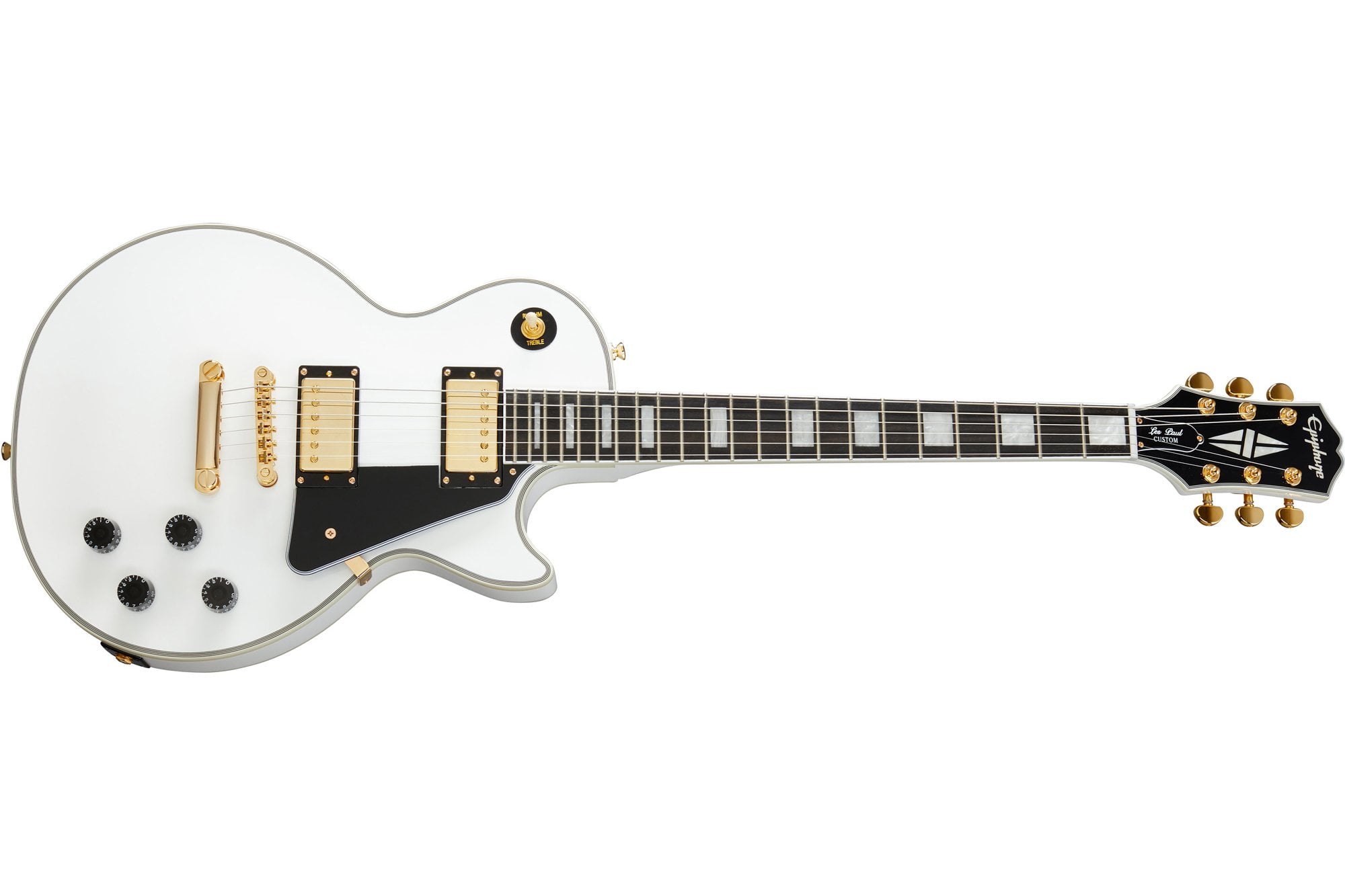
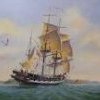

.thumb.jpeg.fc5d633a7b34428fcf19419a73d56d55.jpeg)


